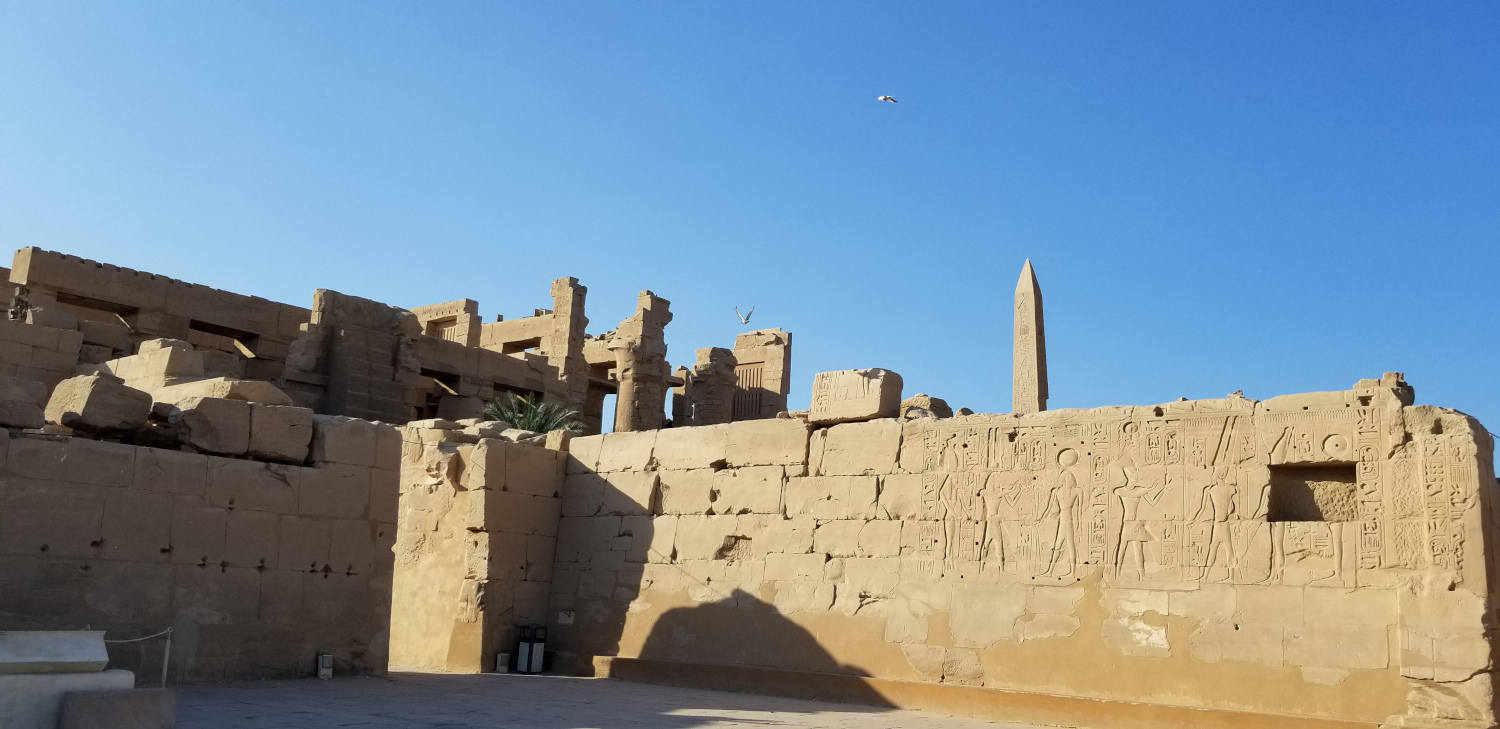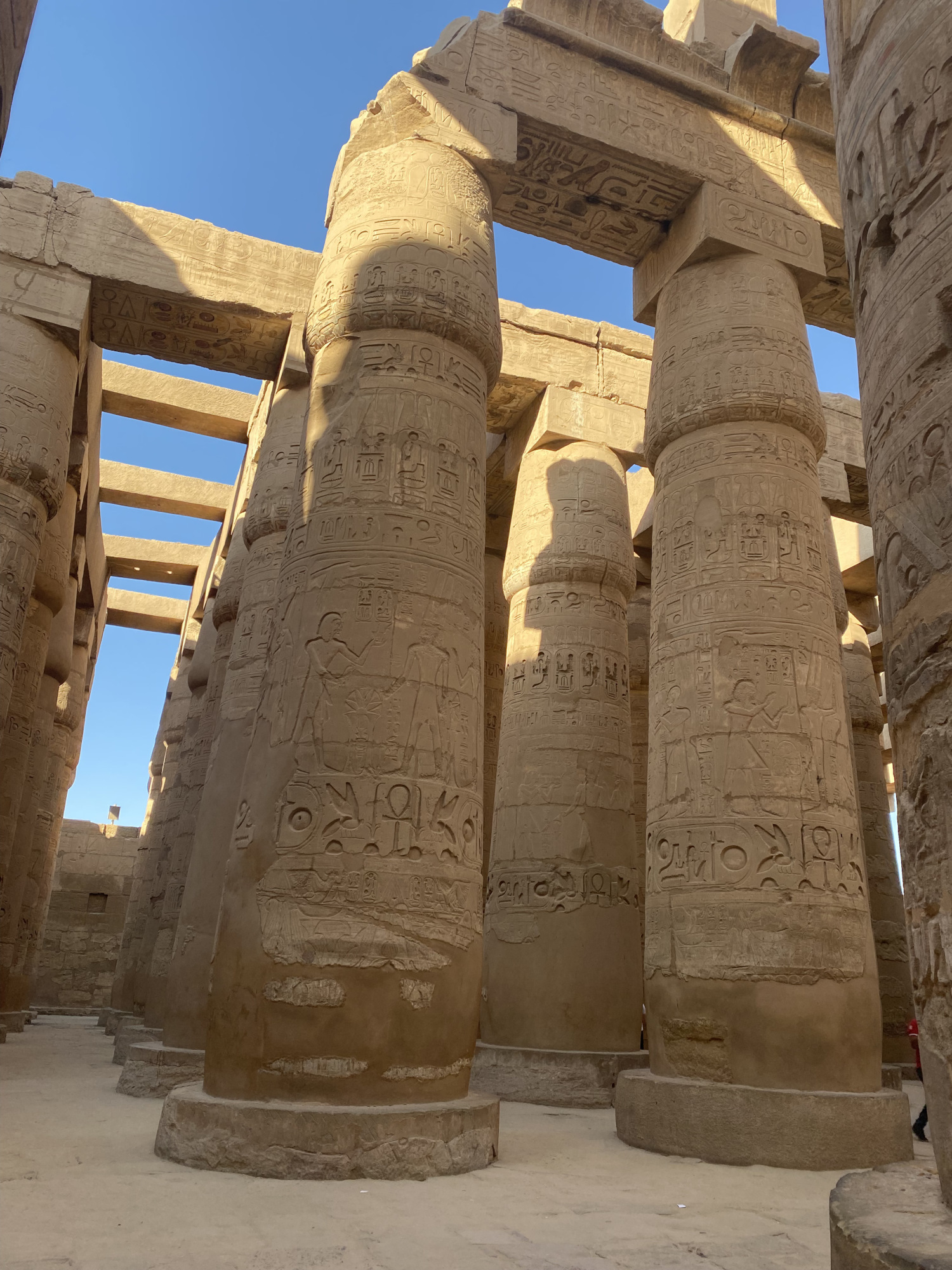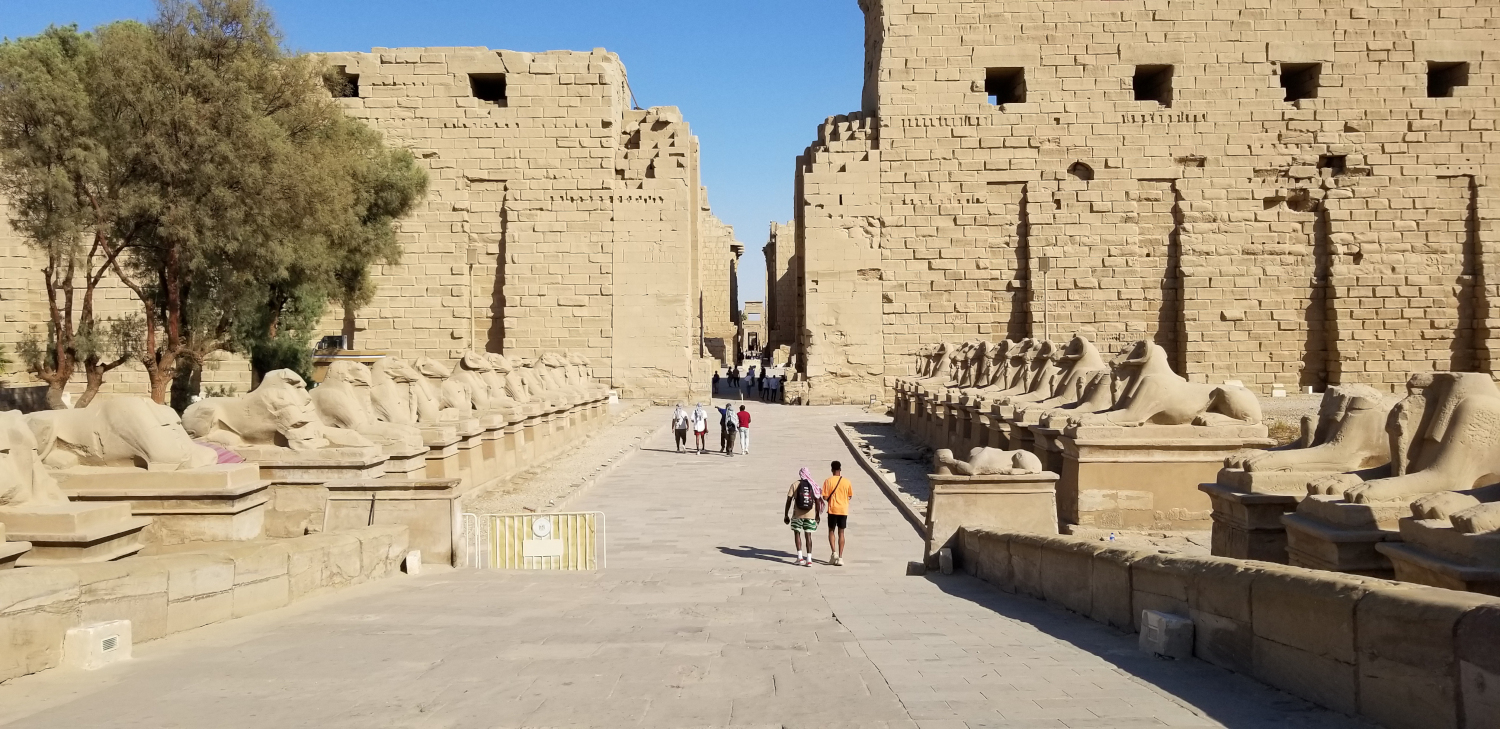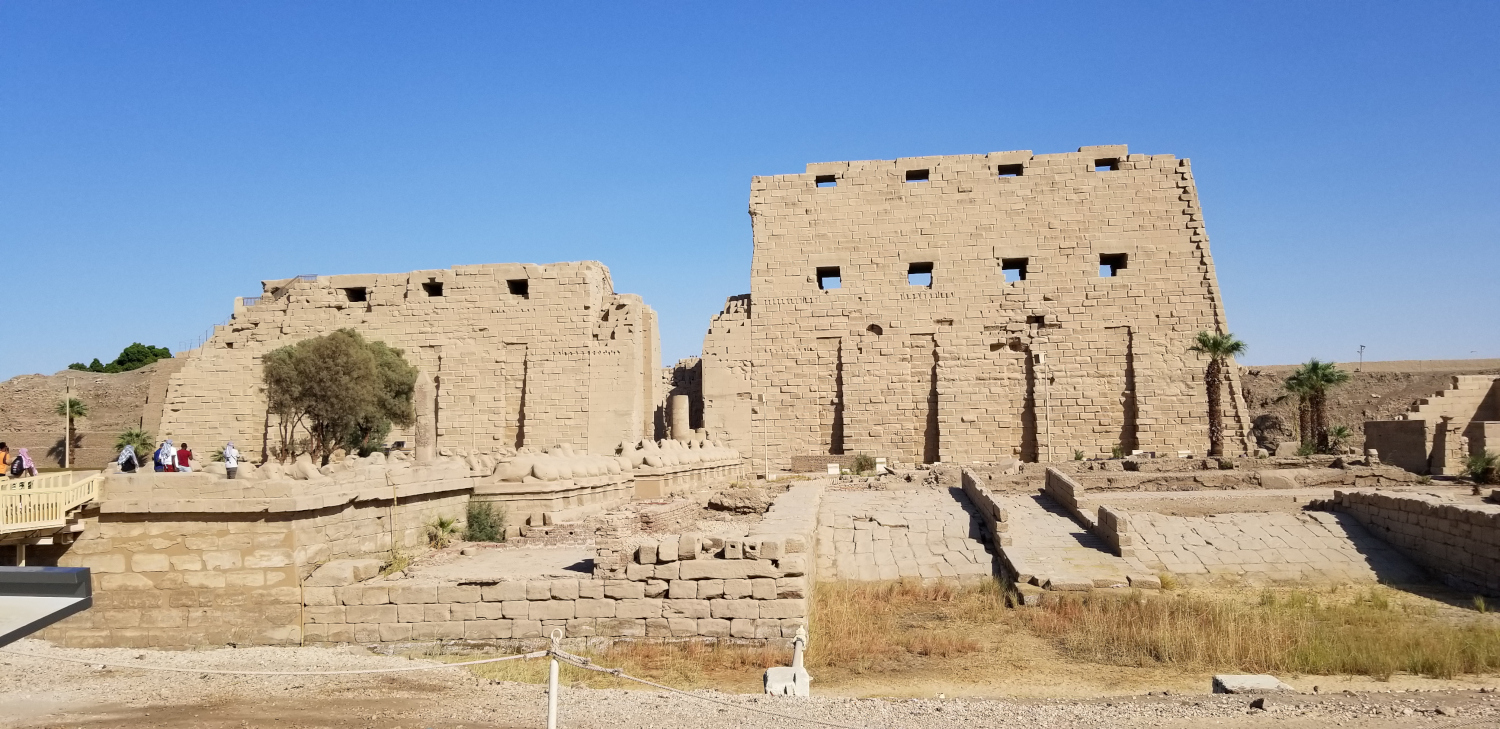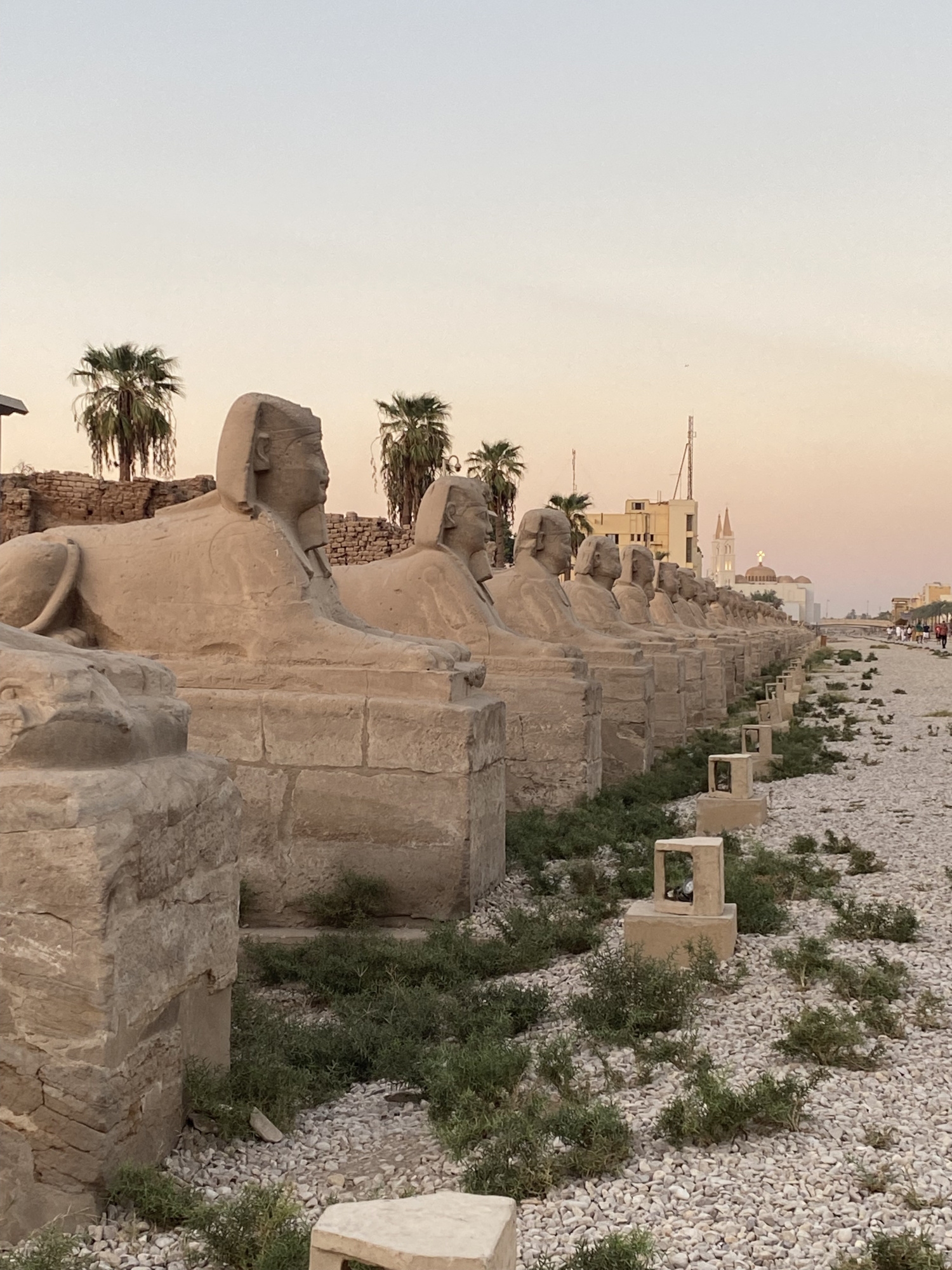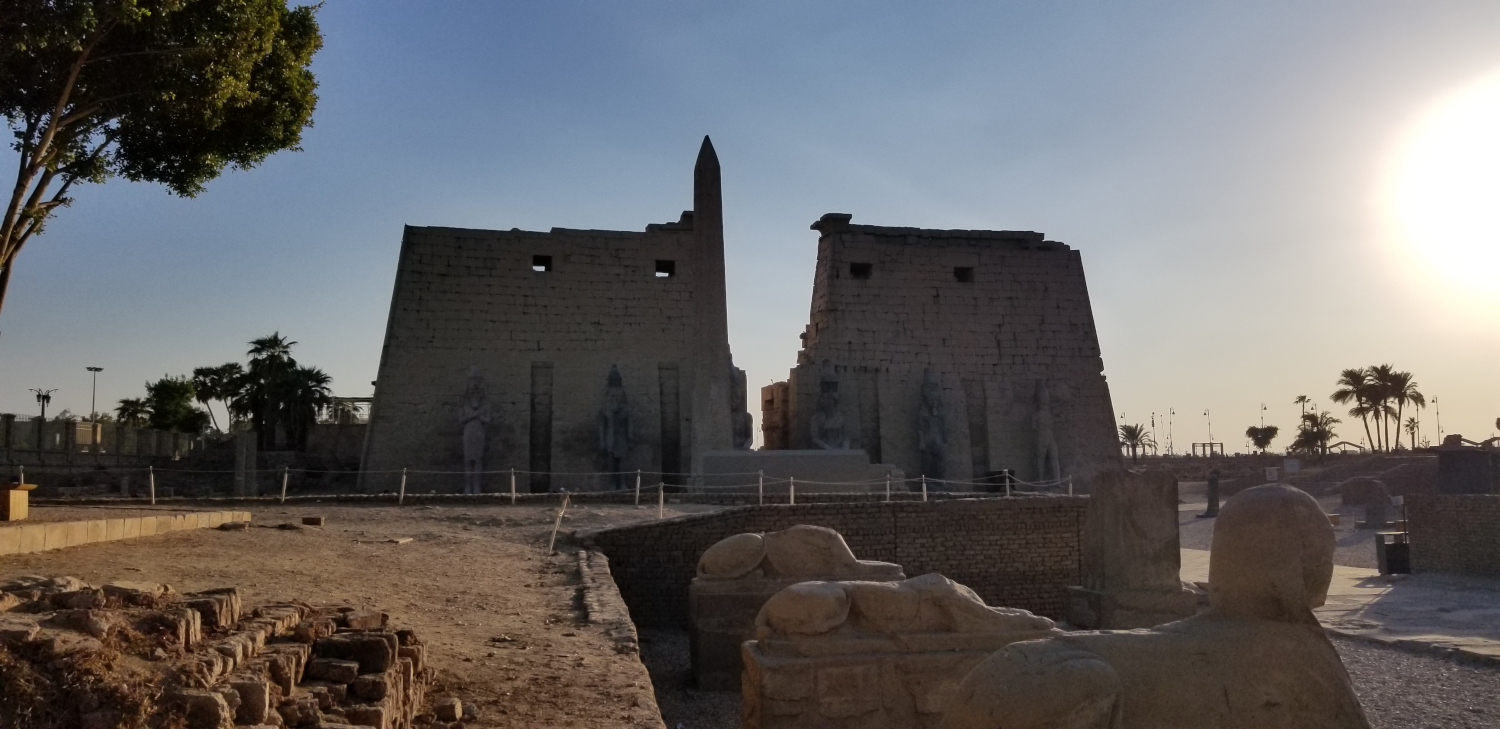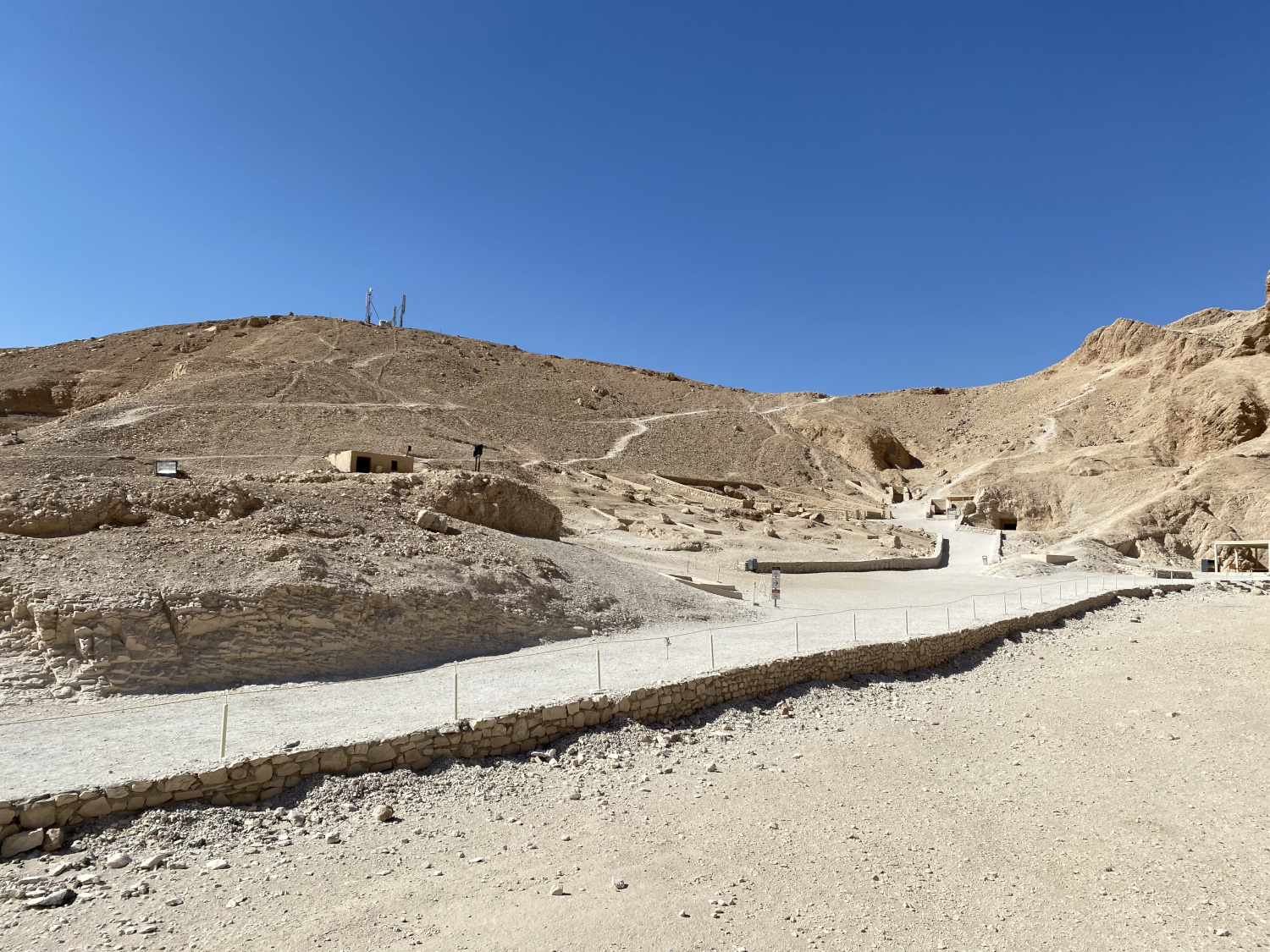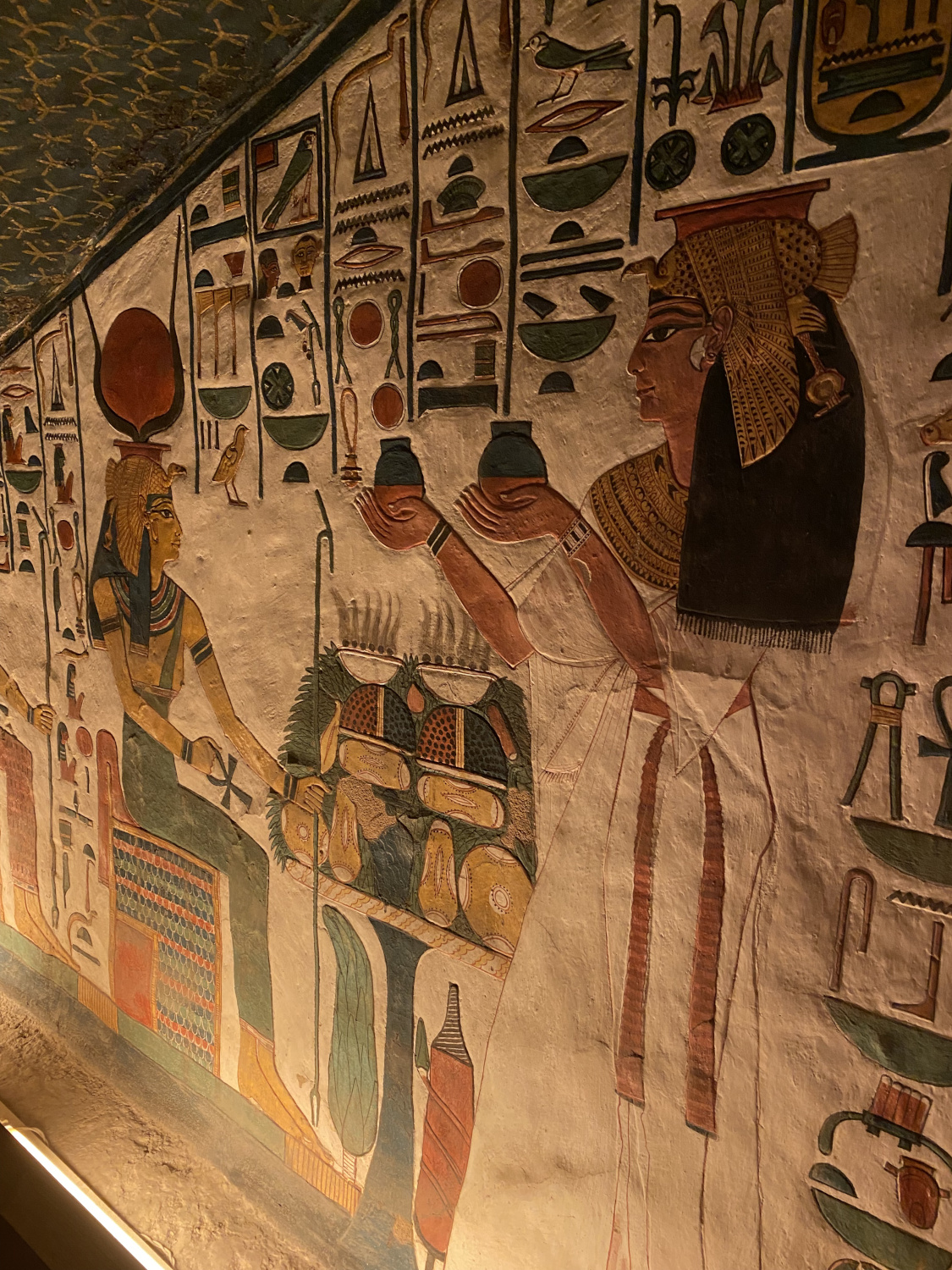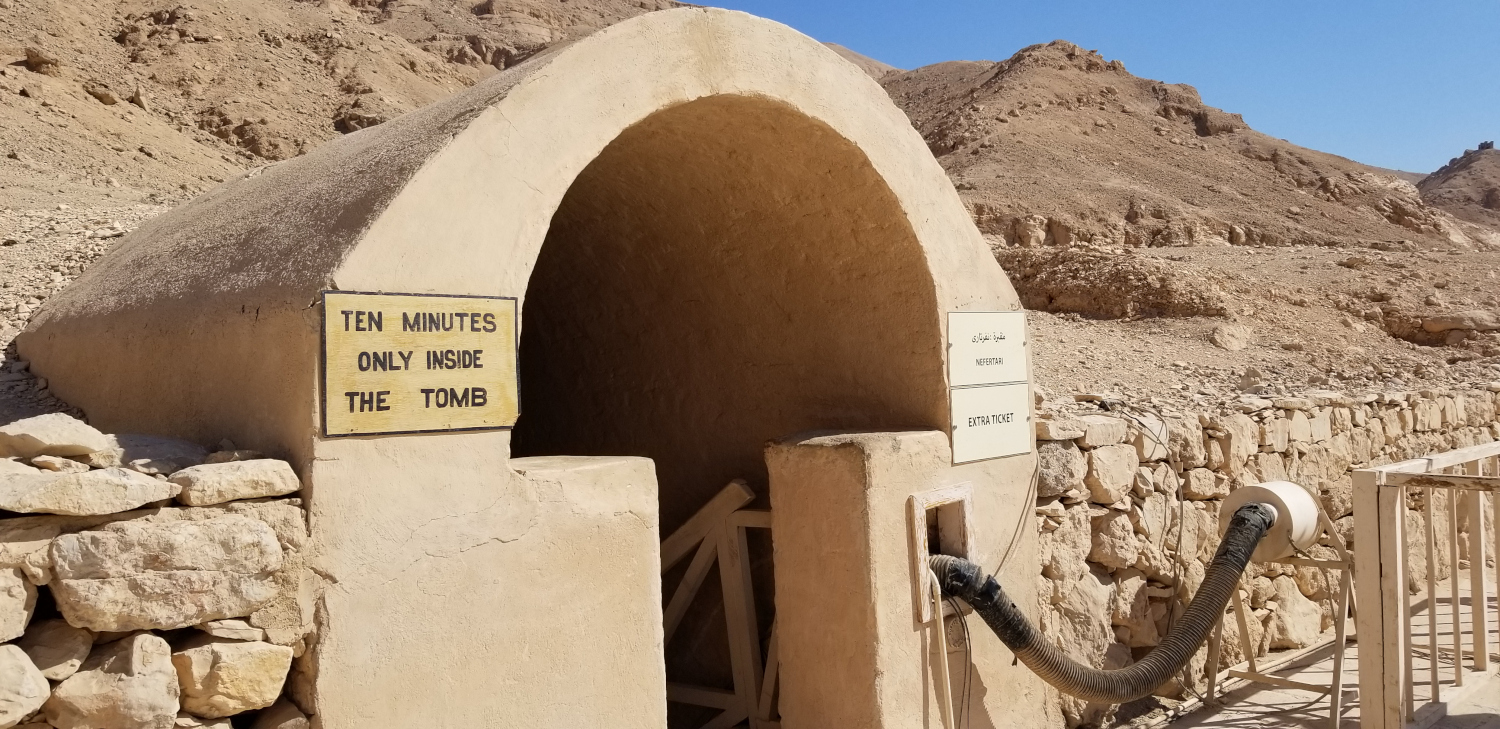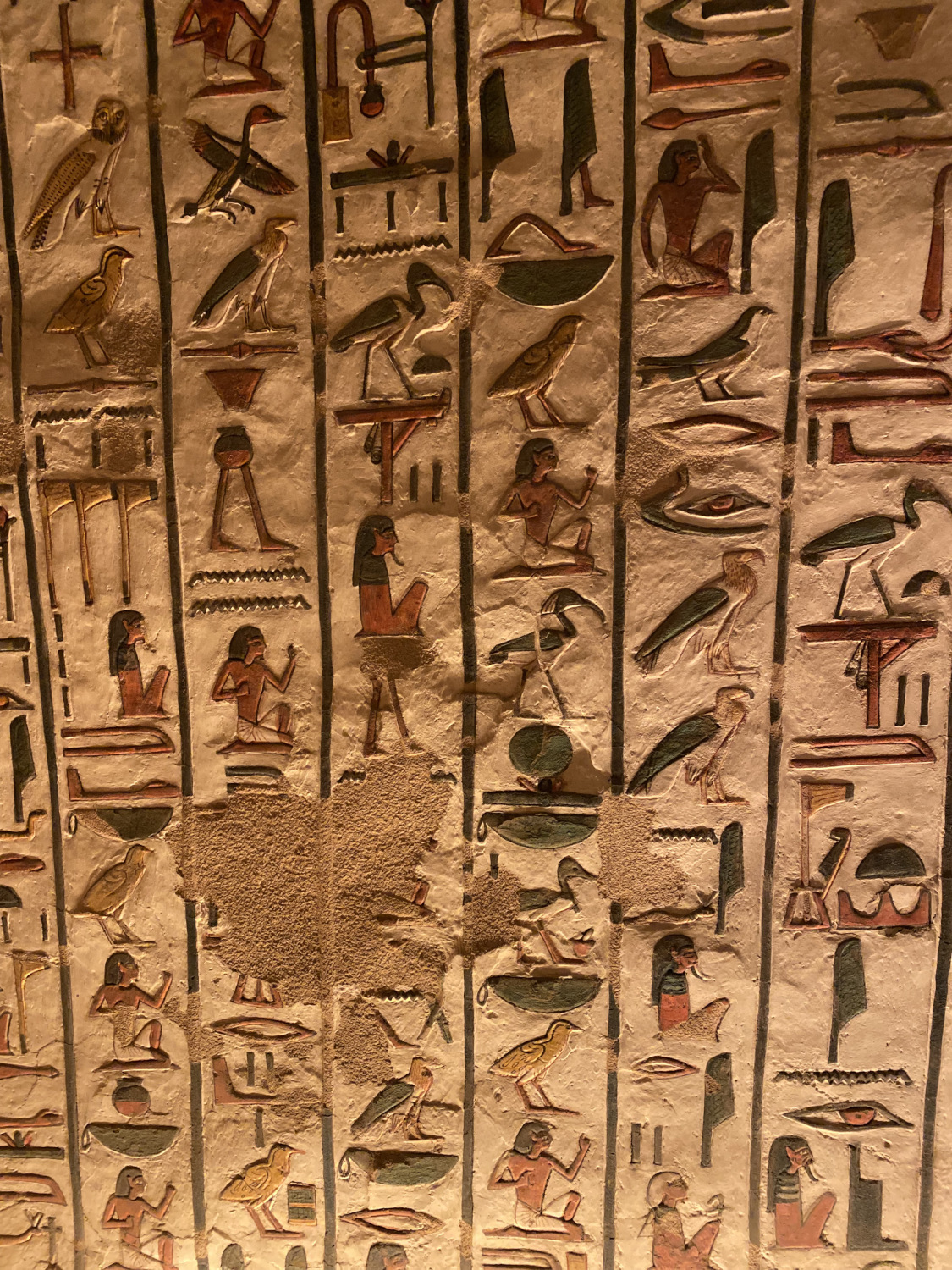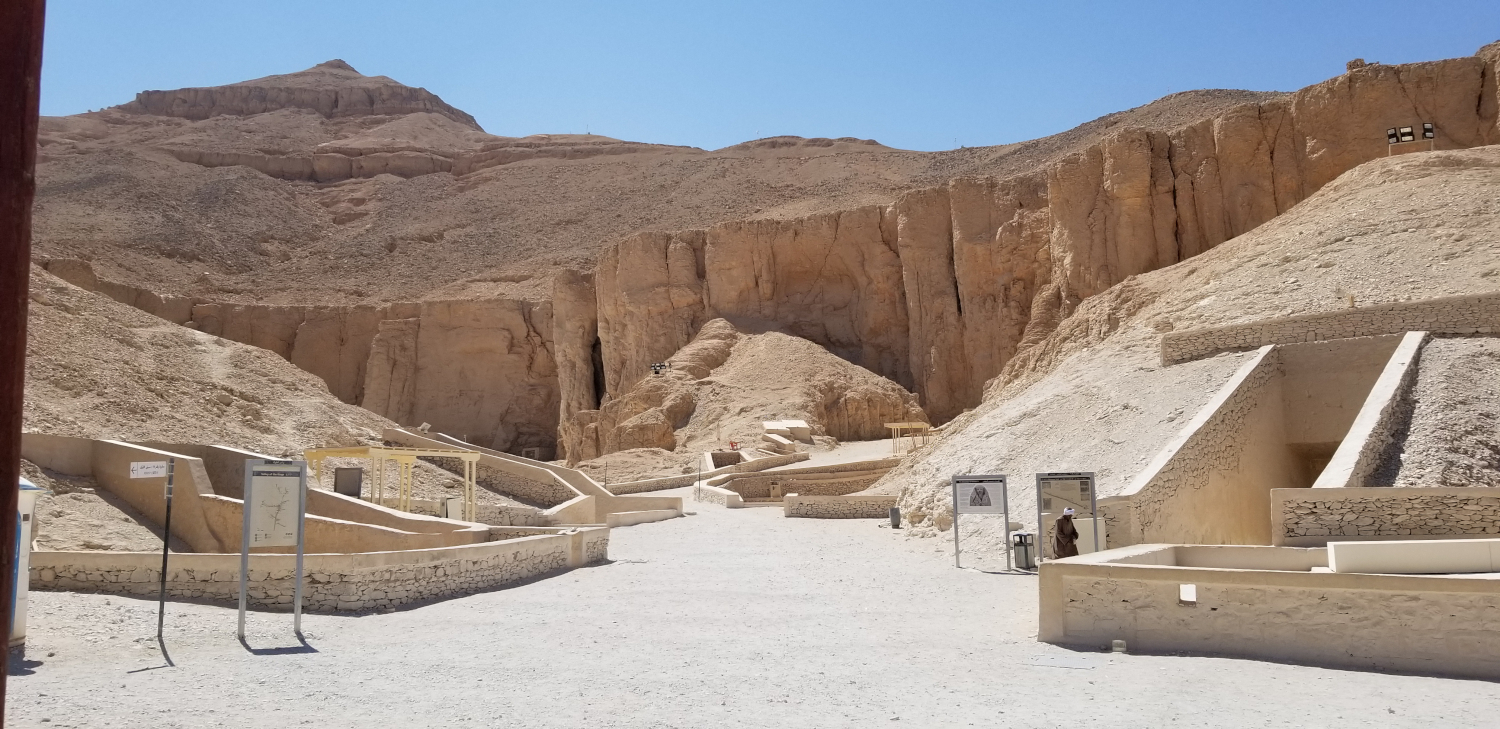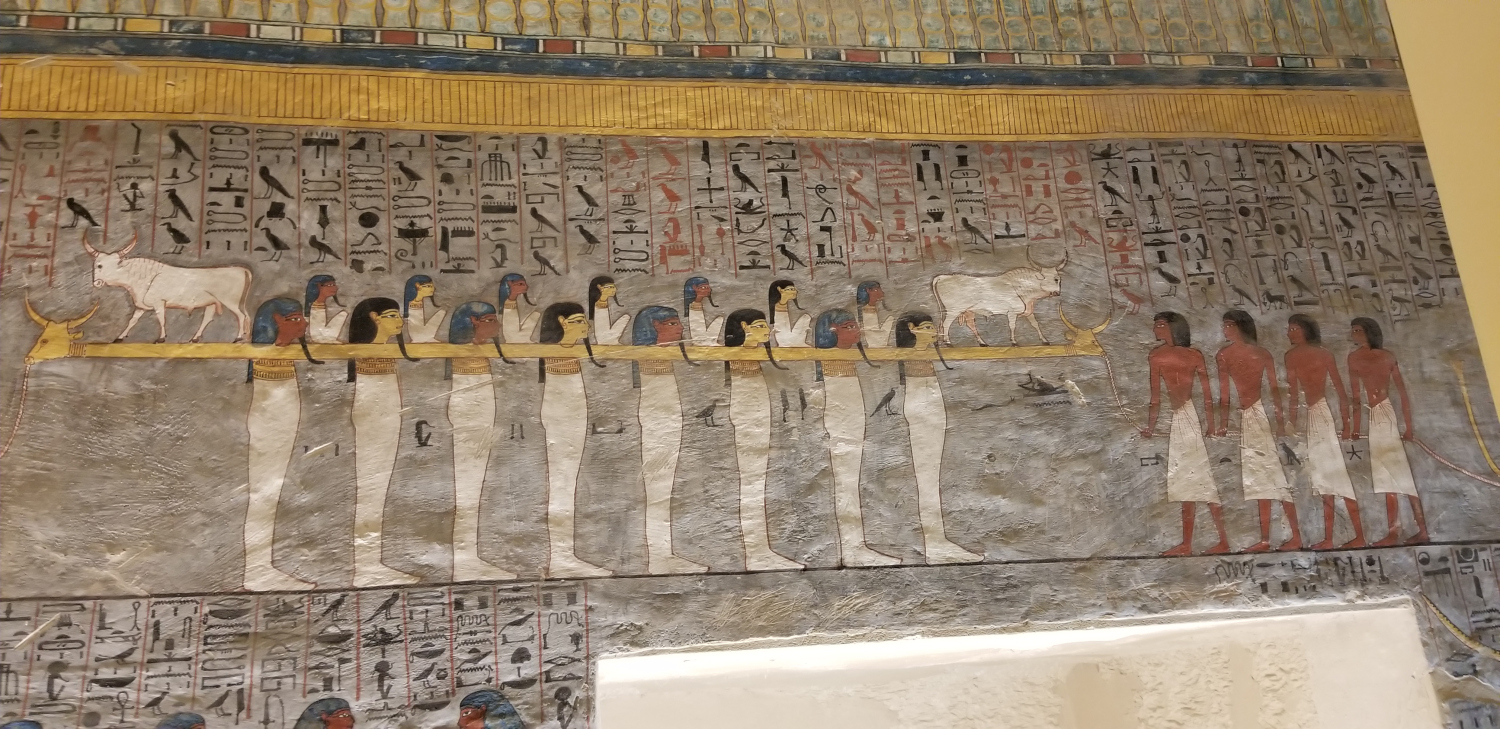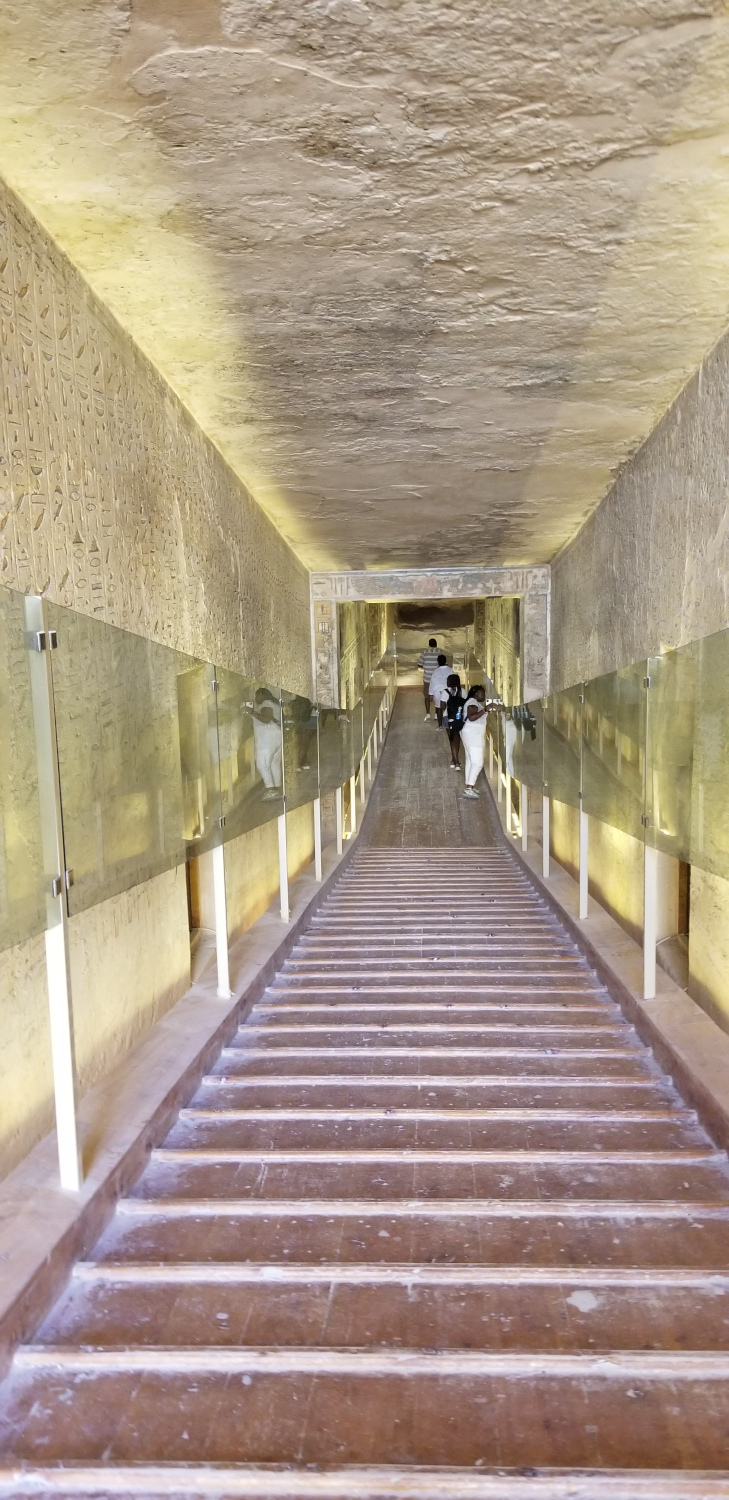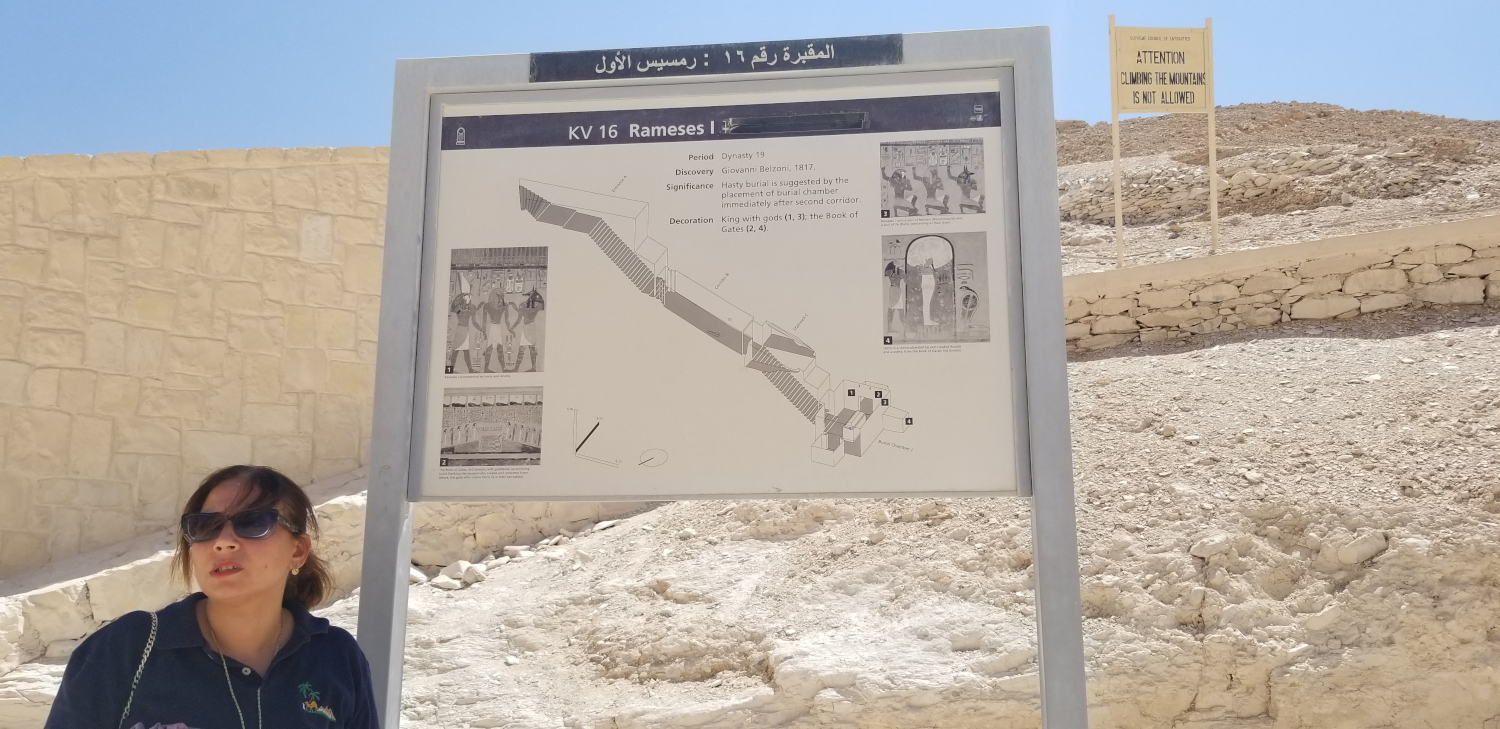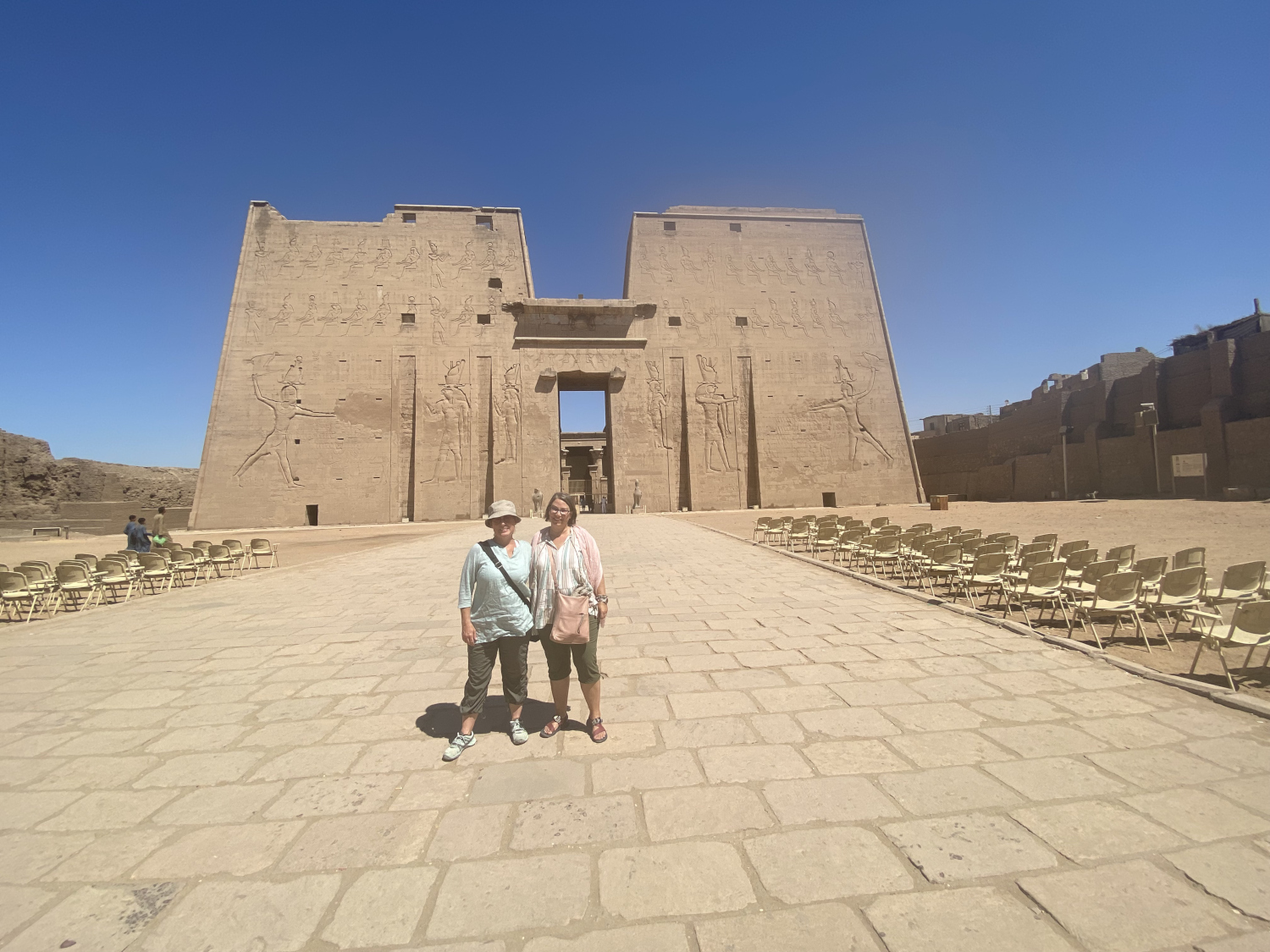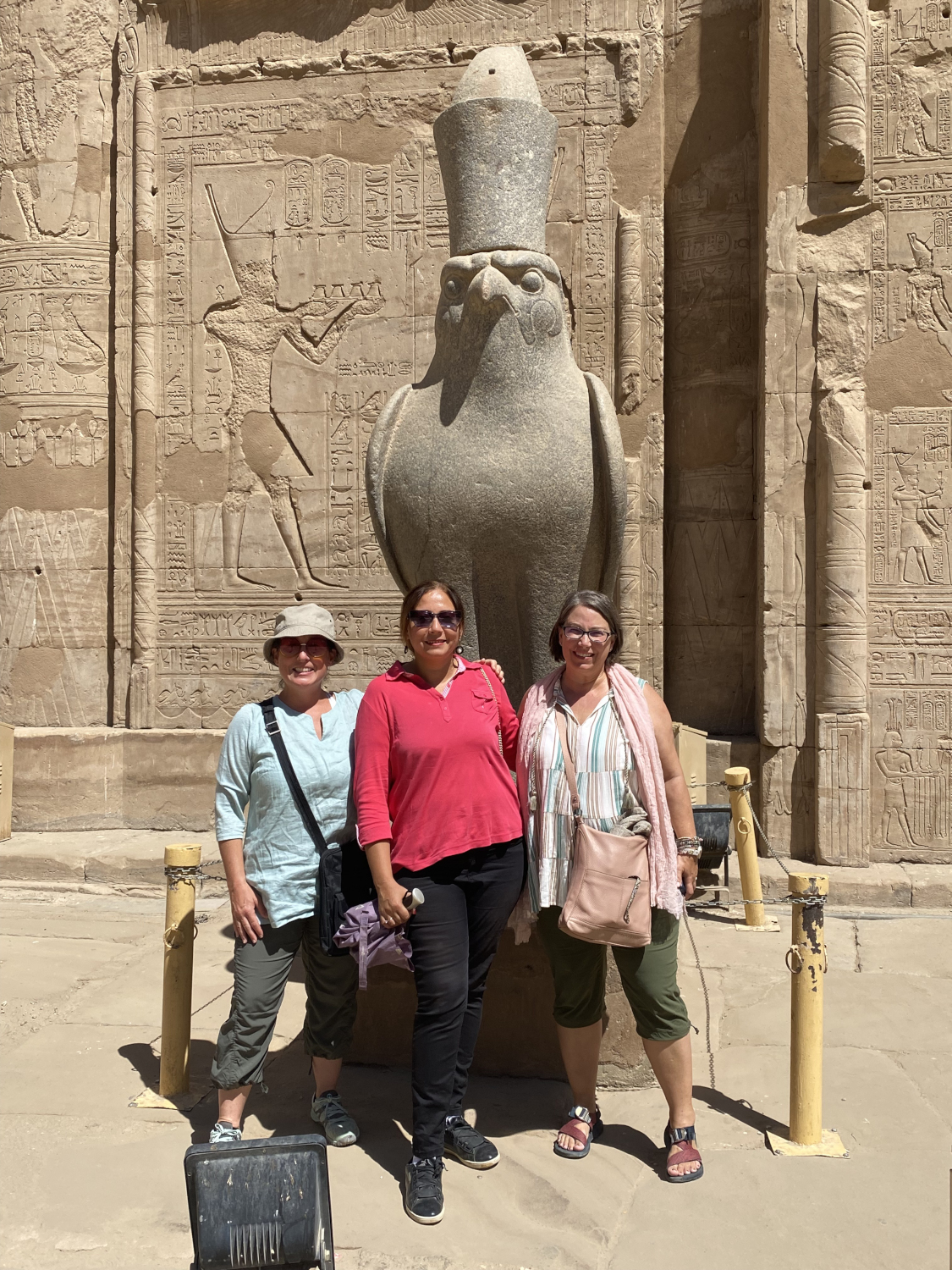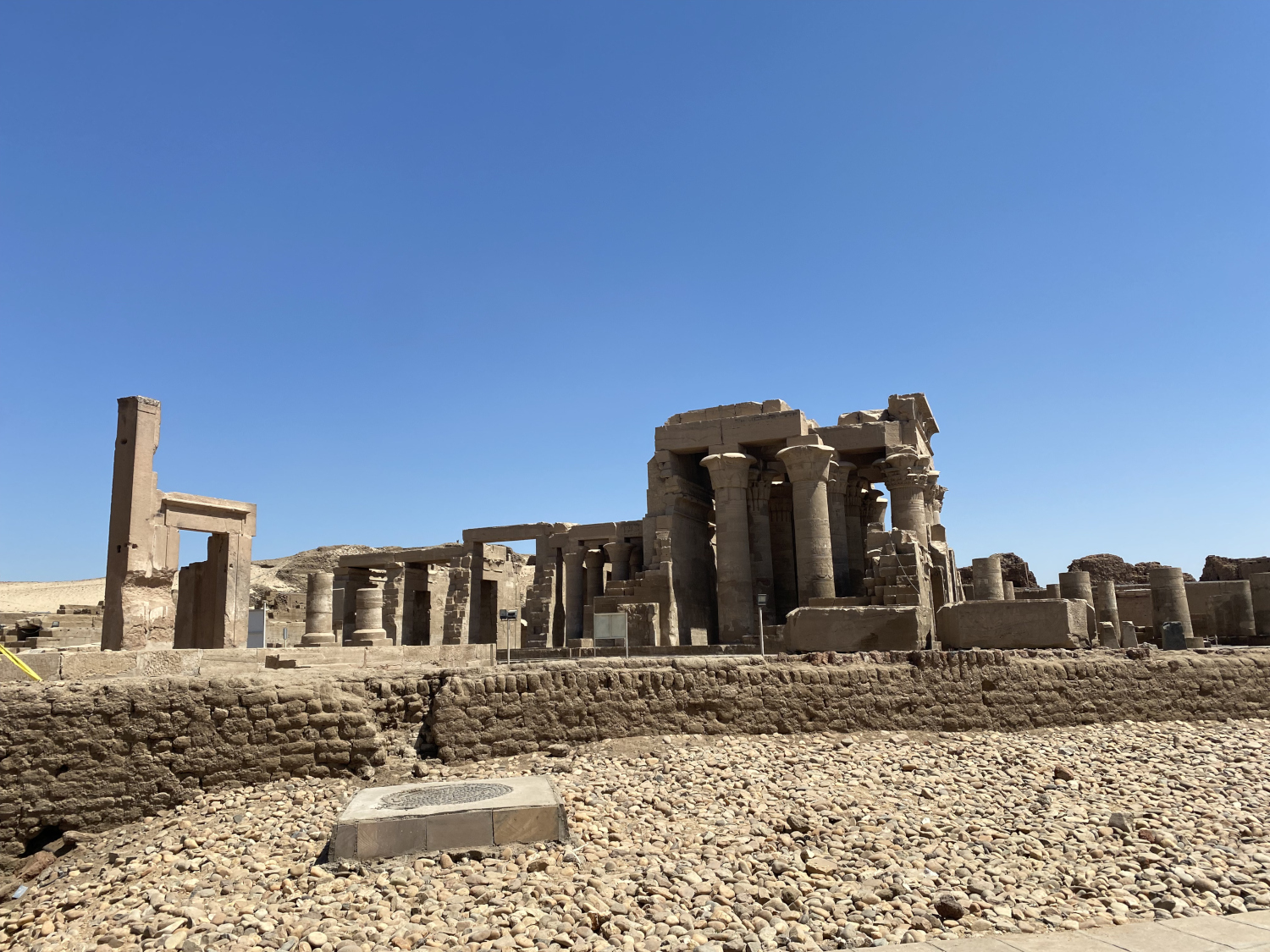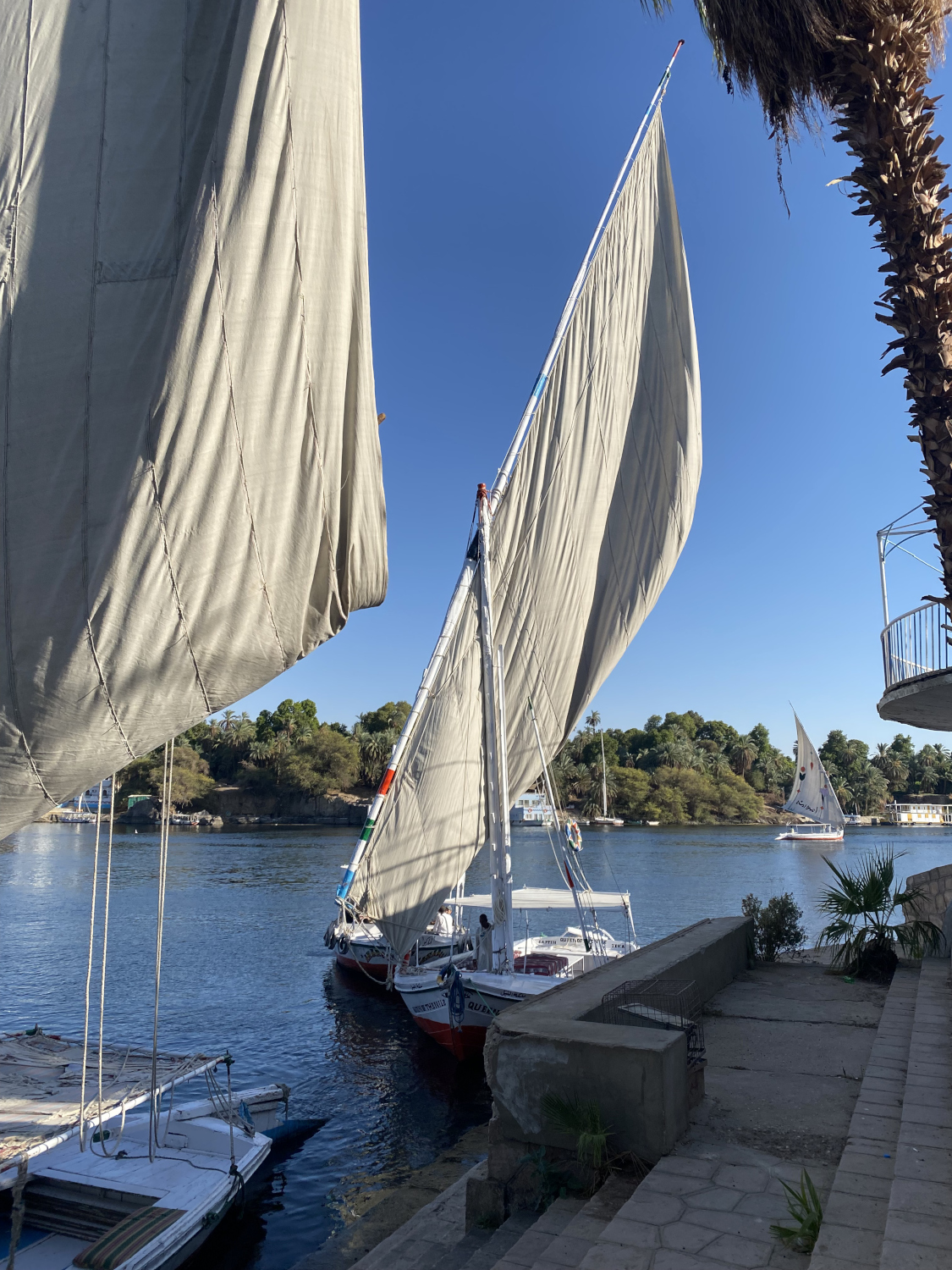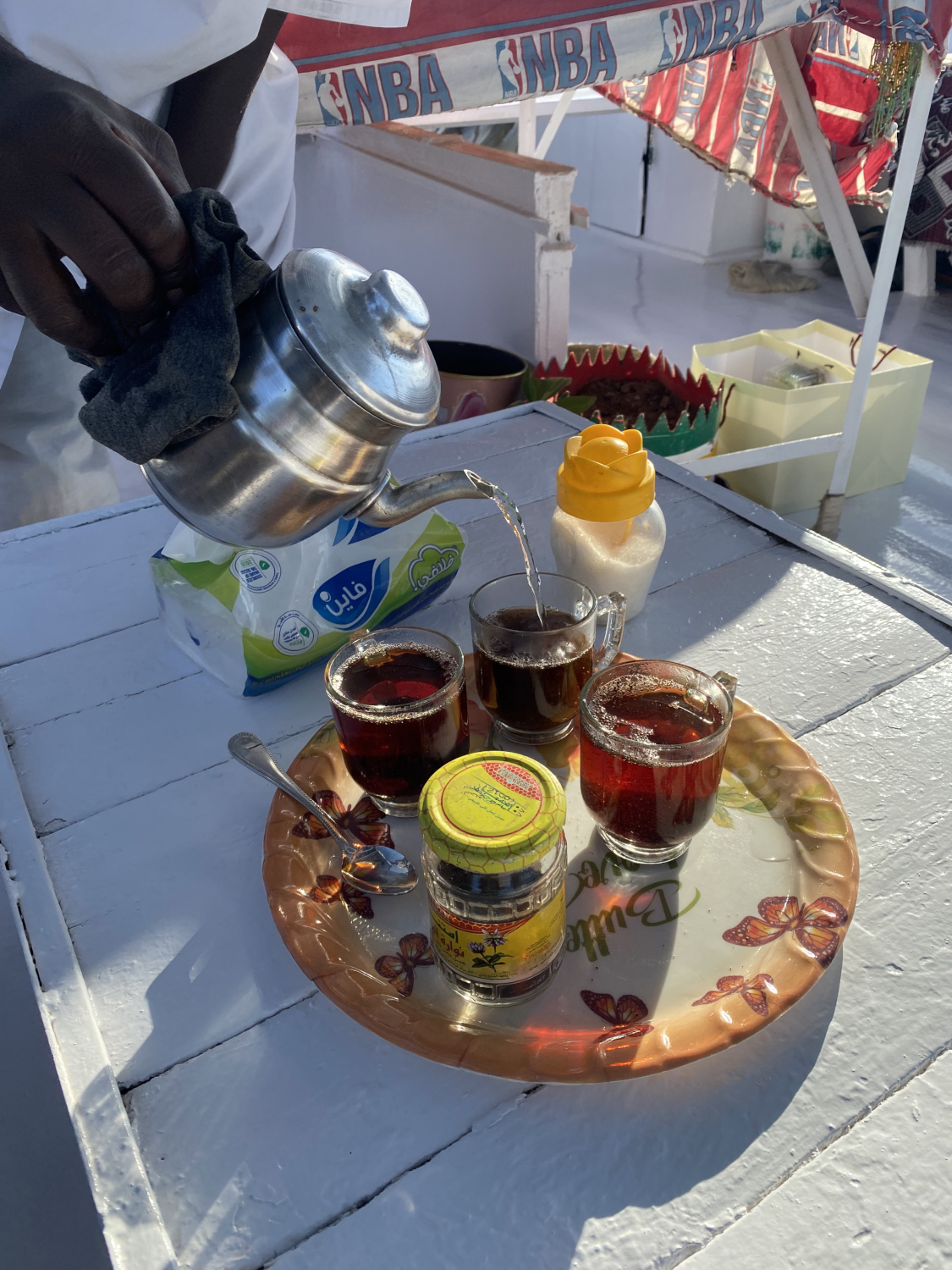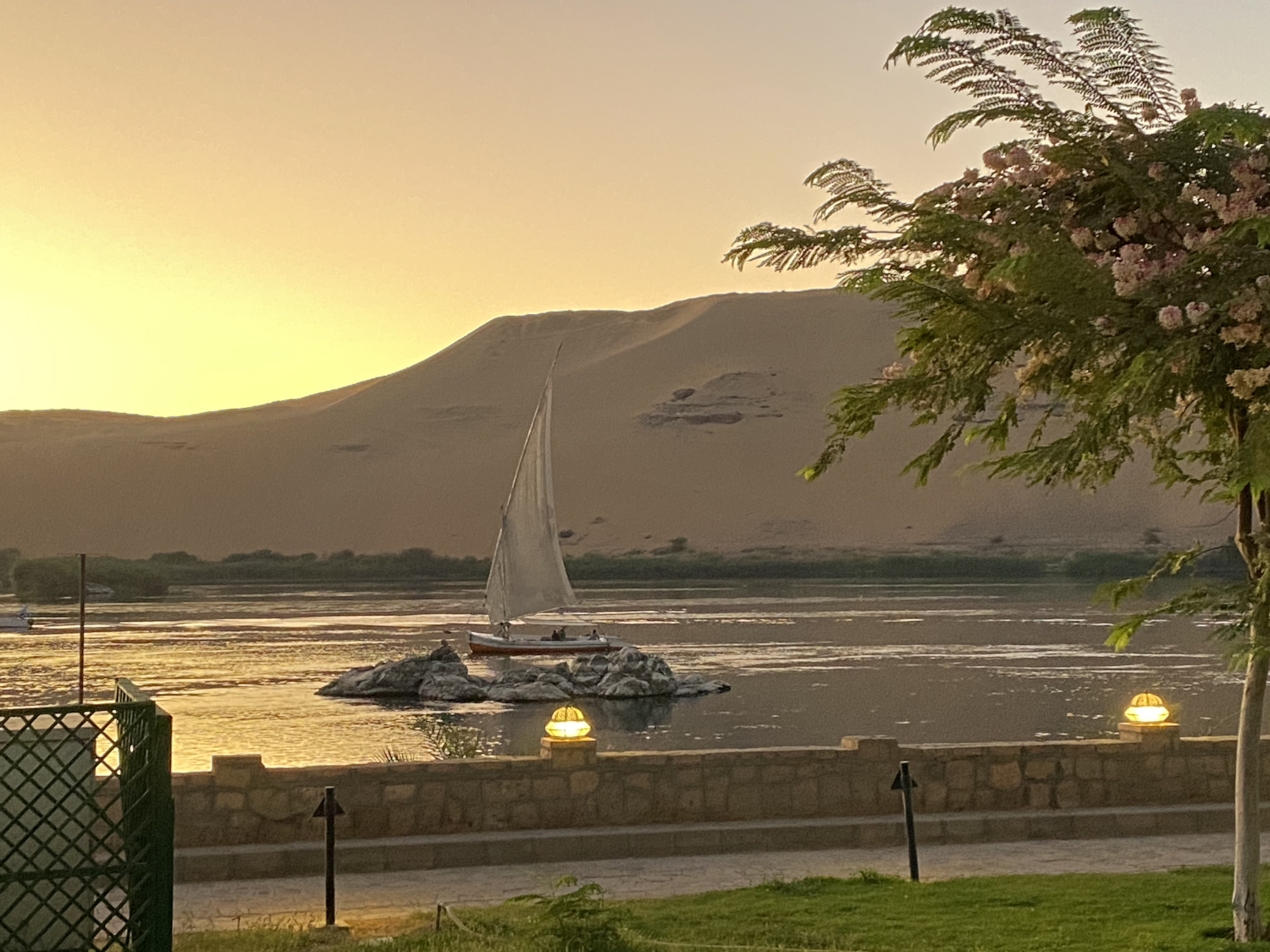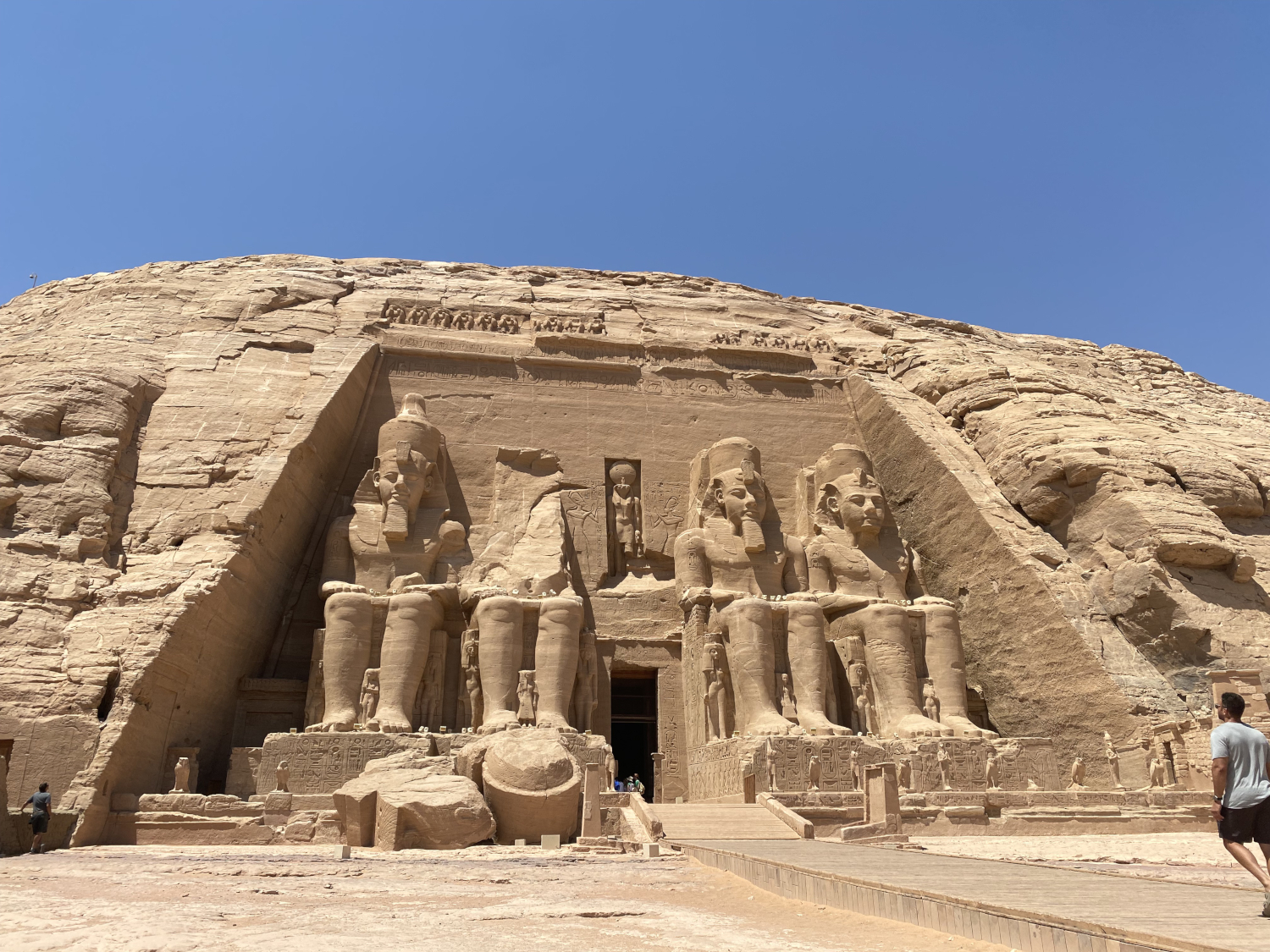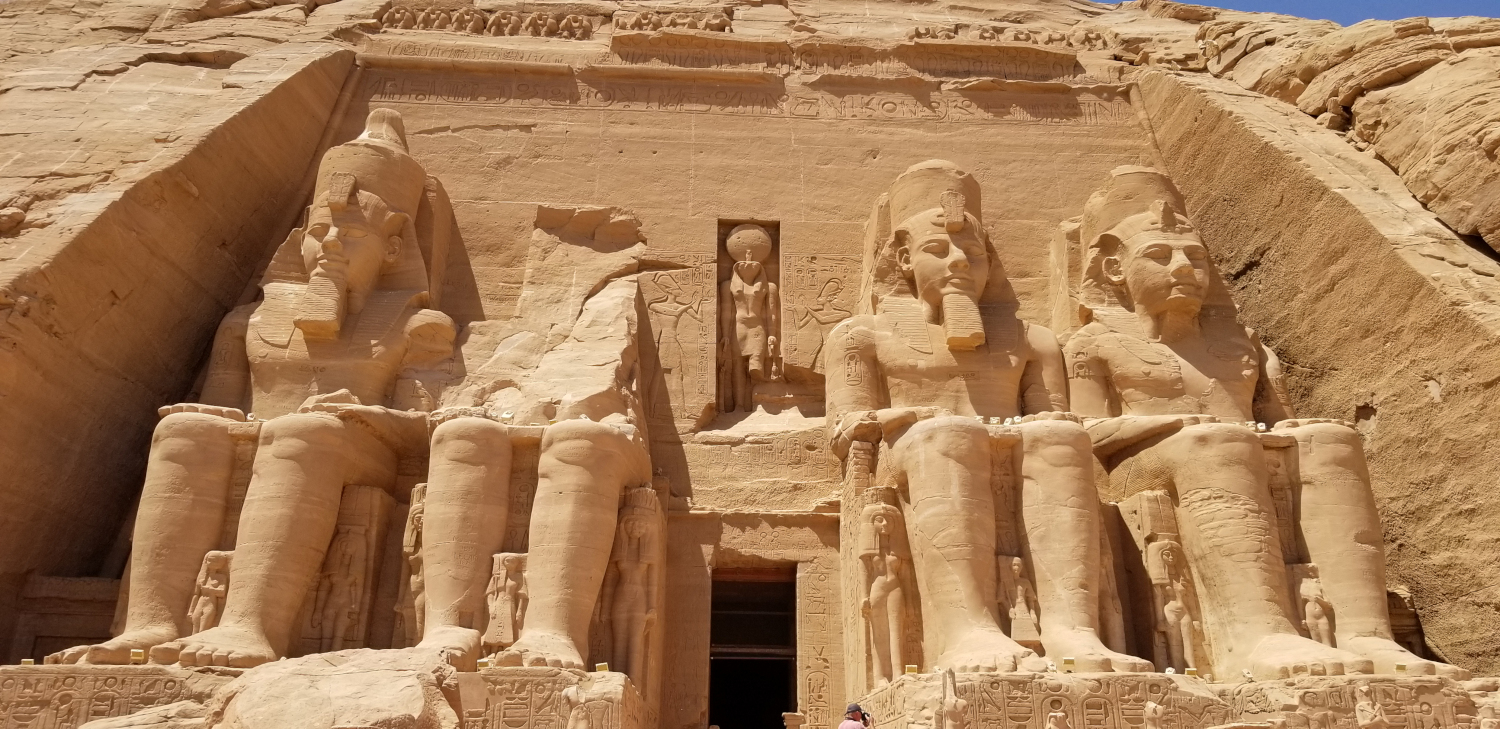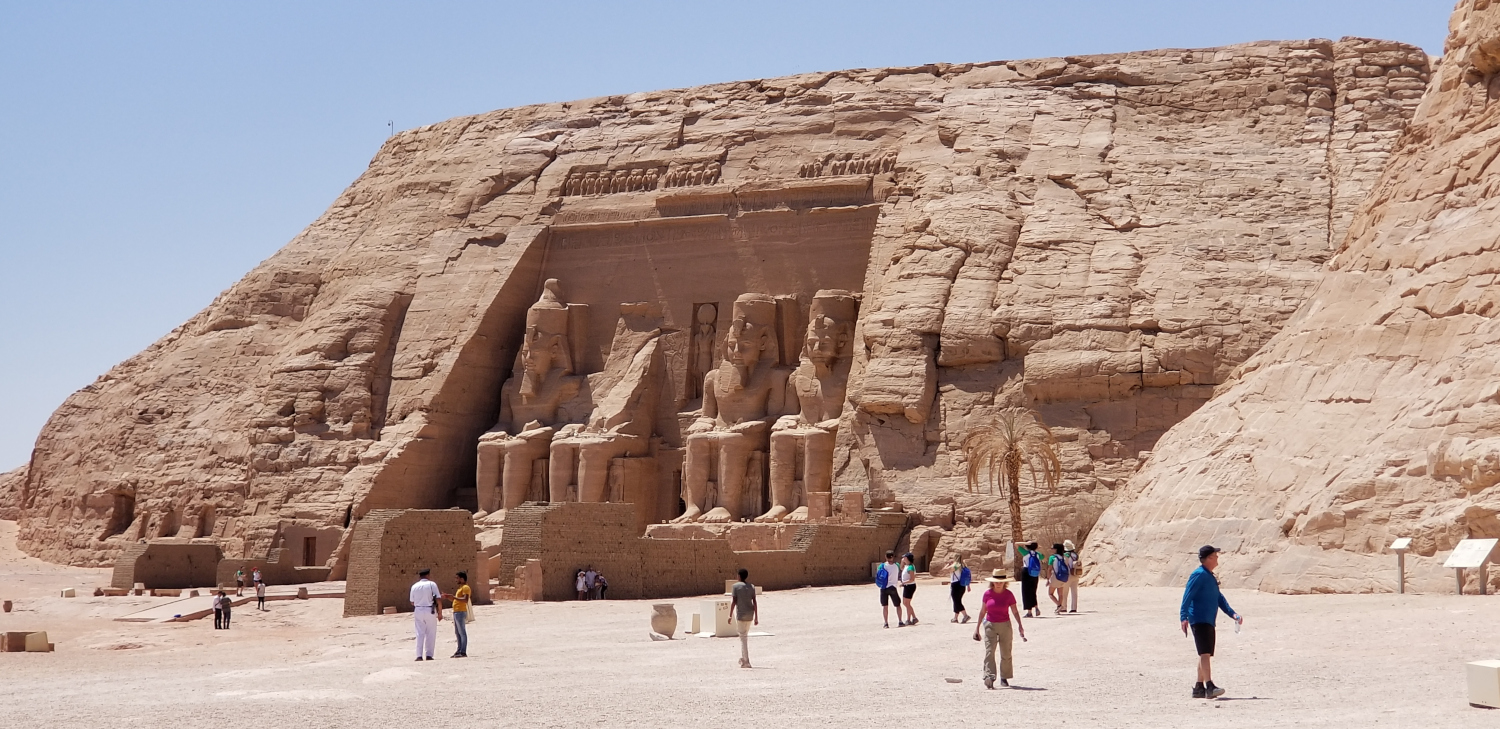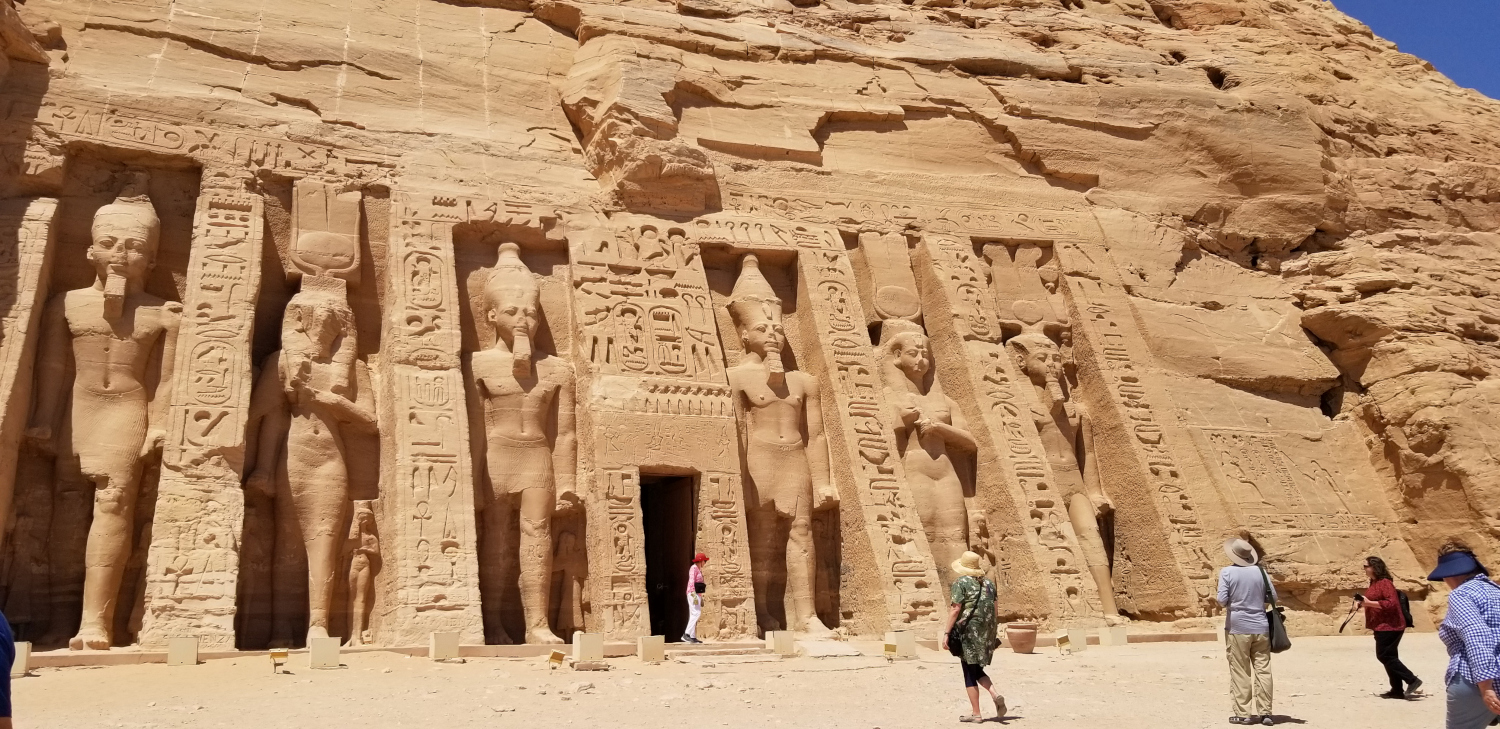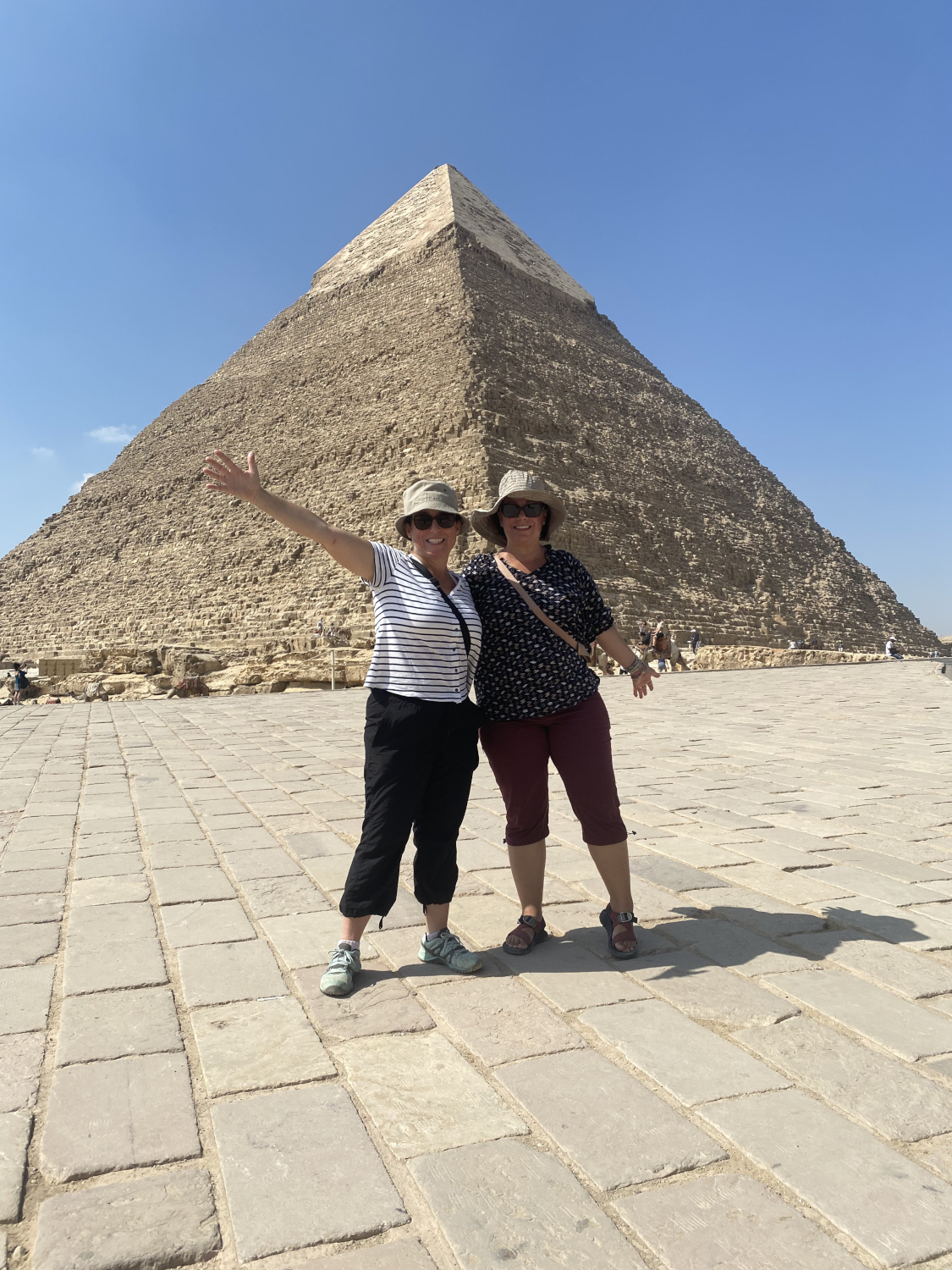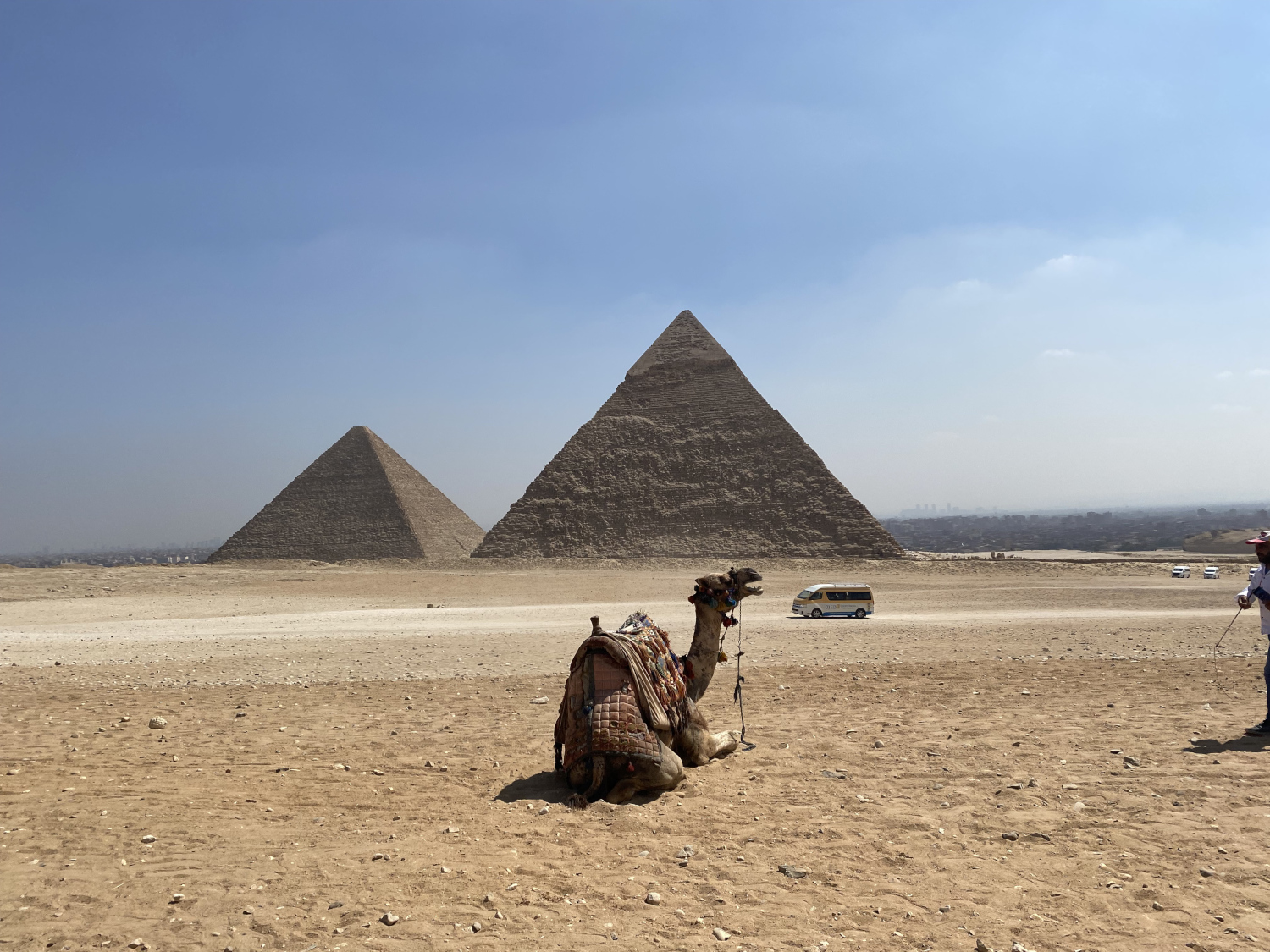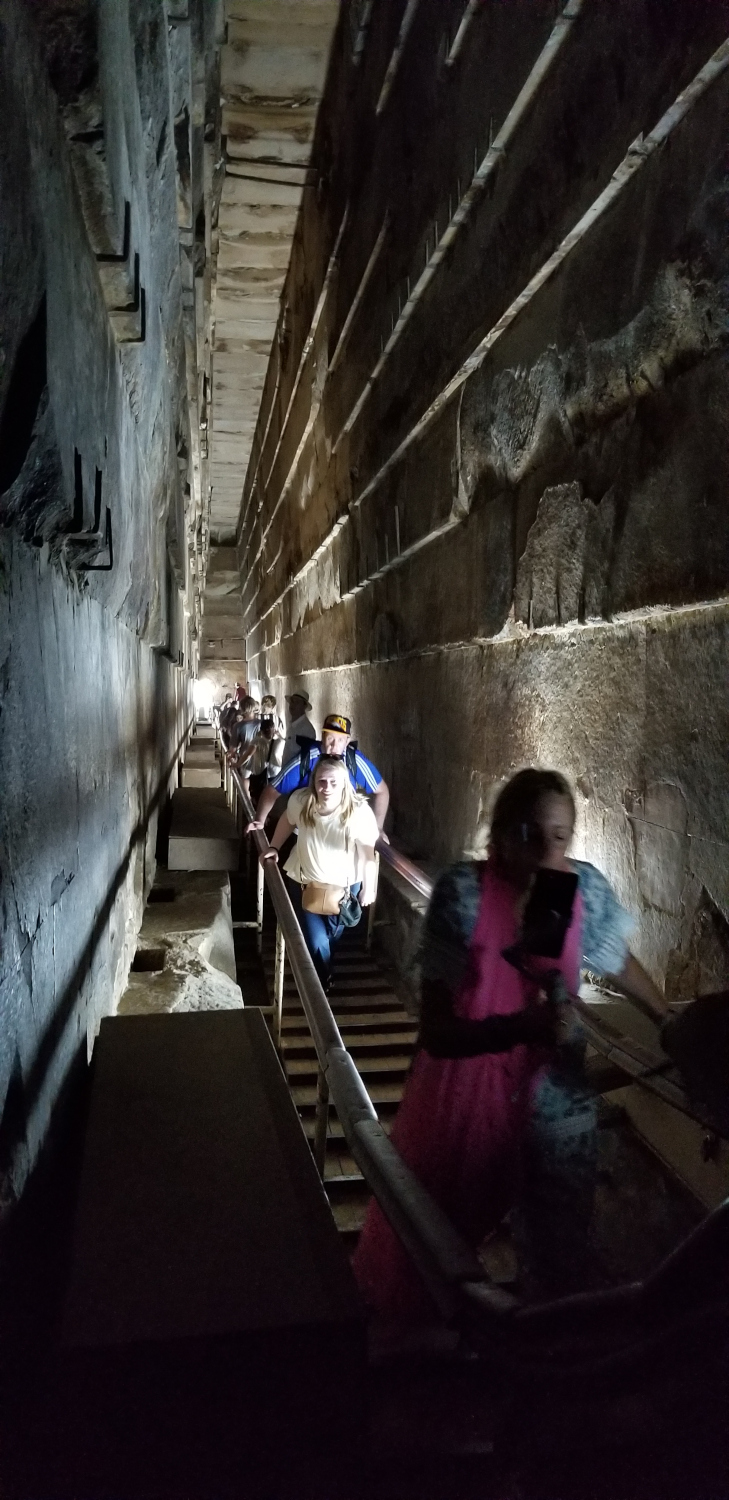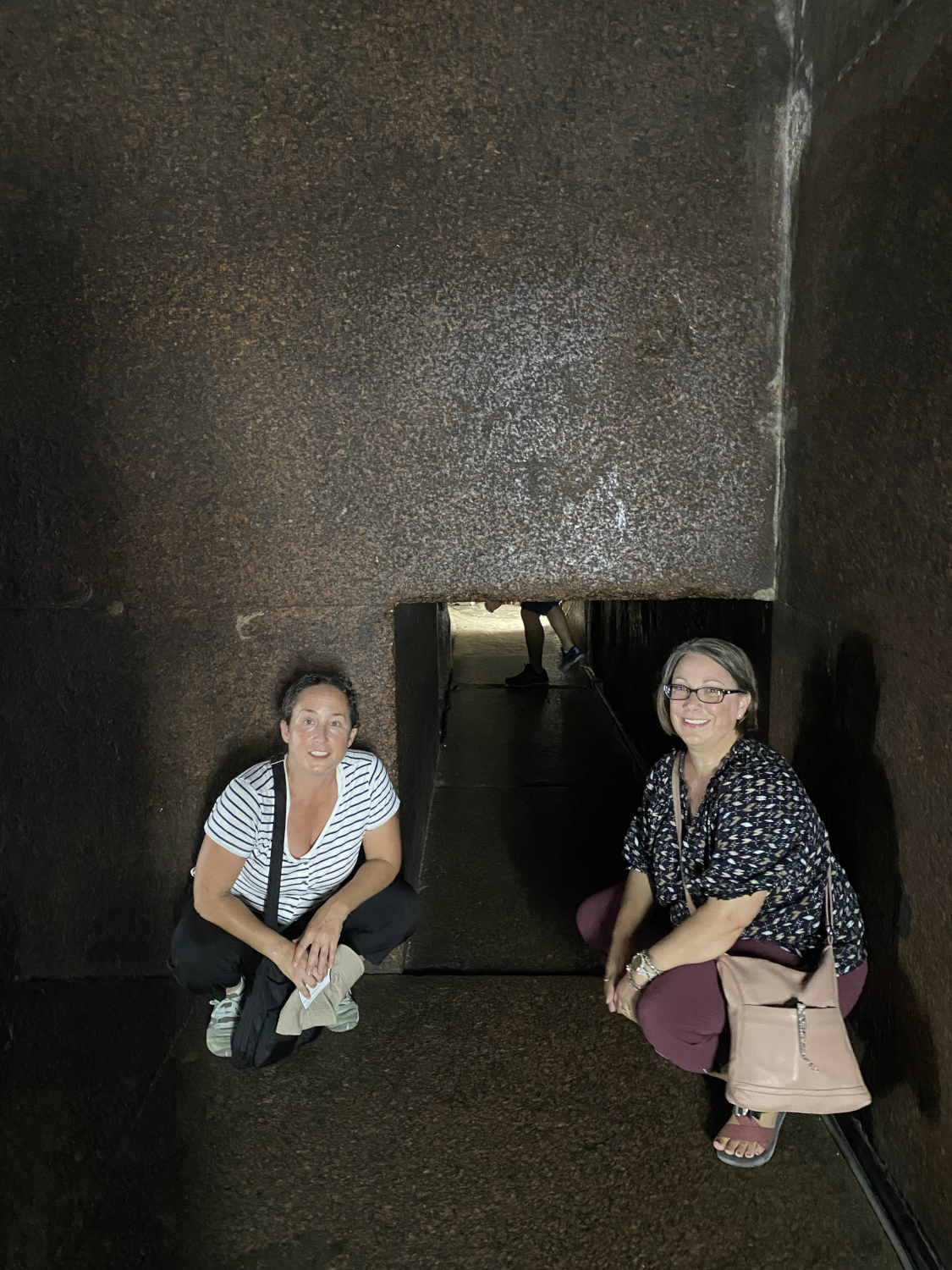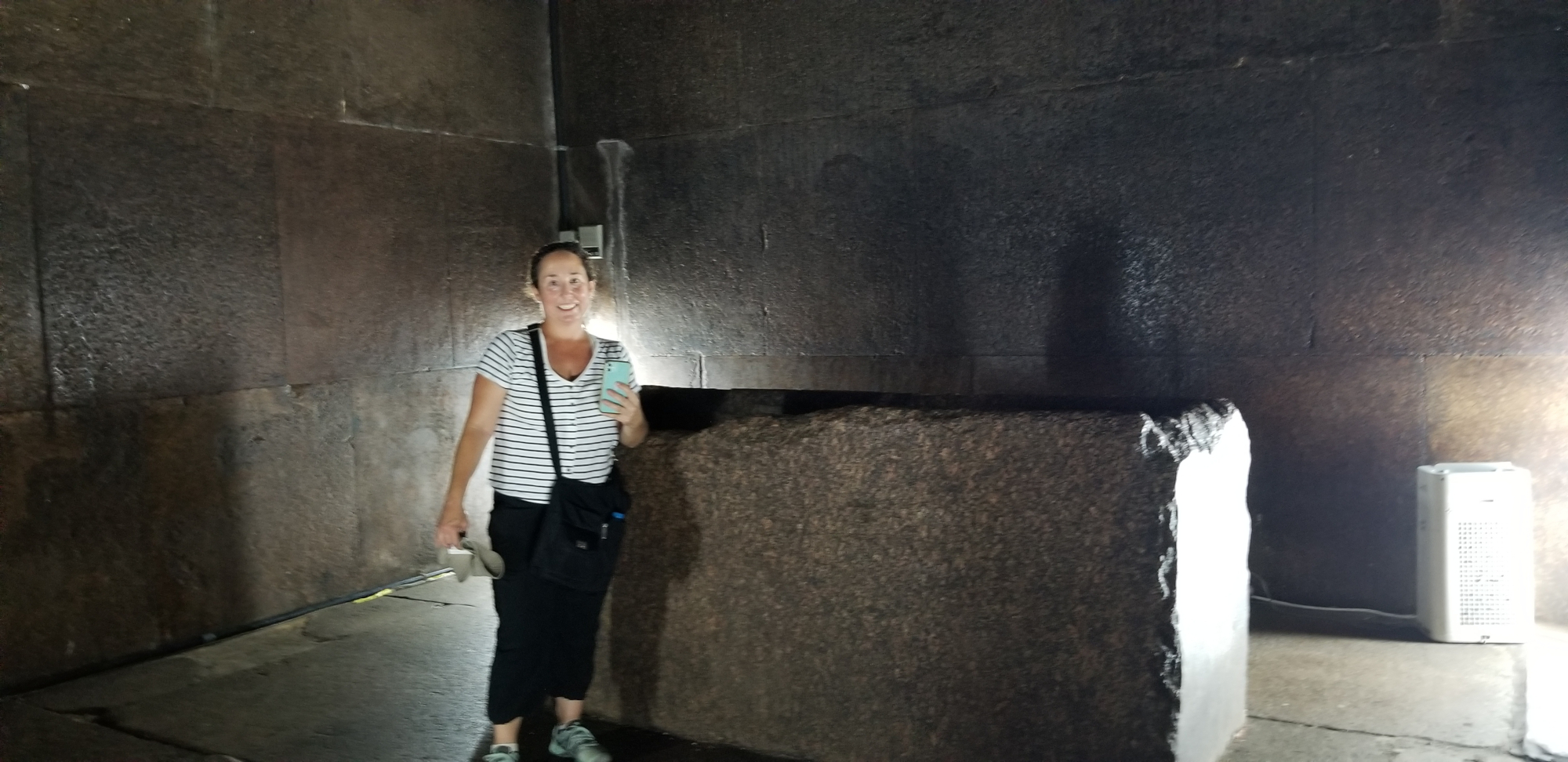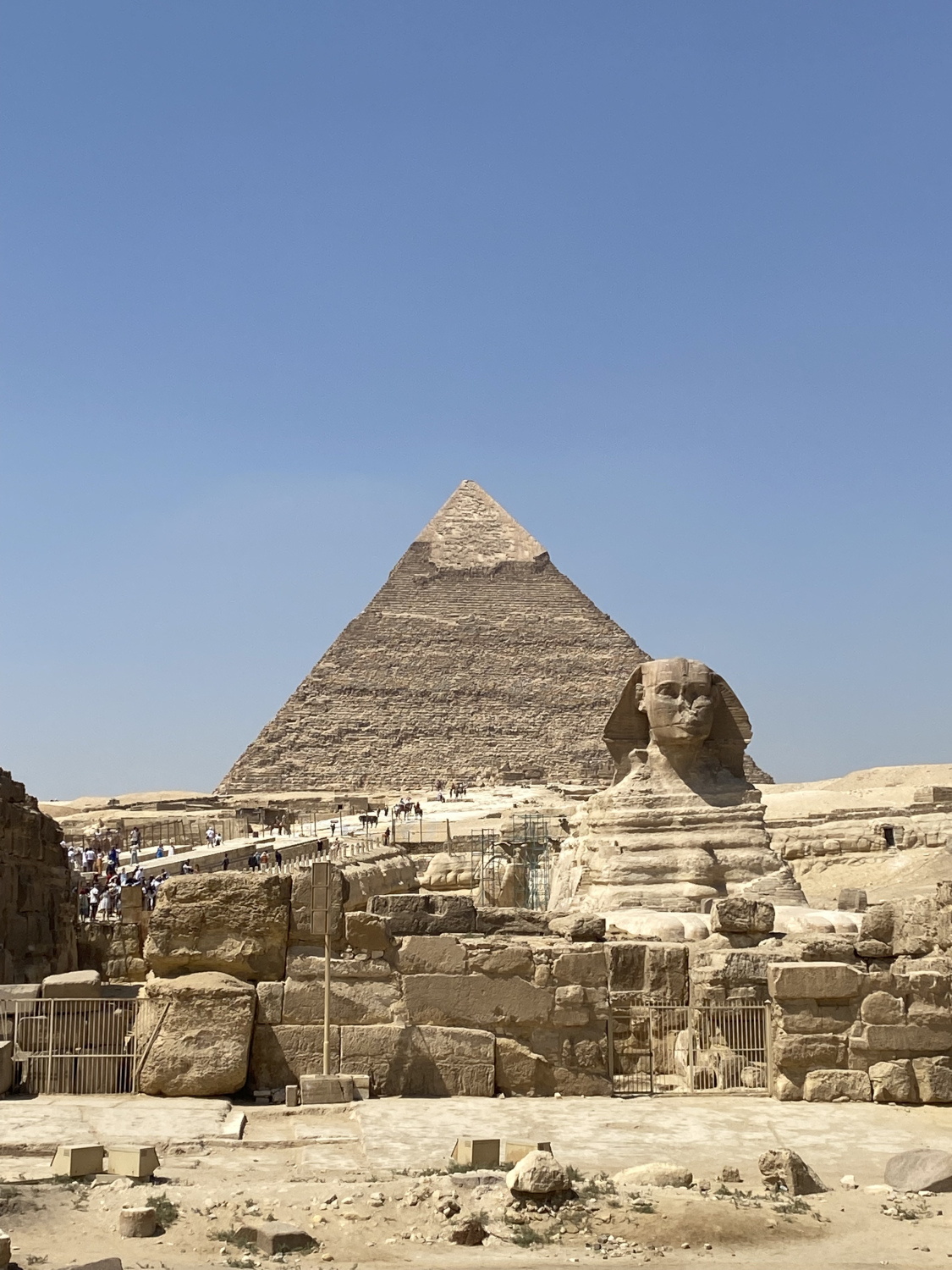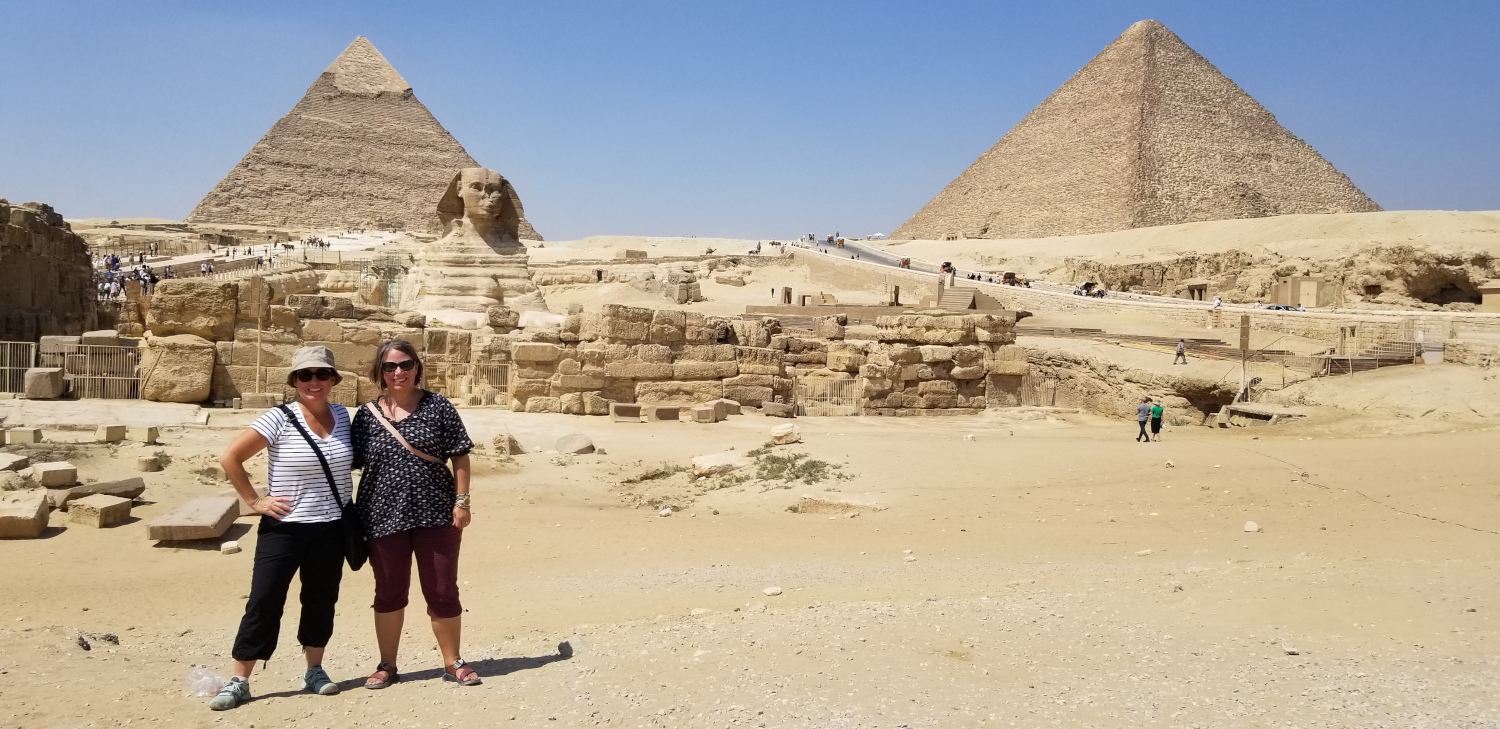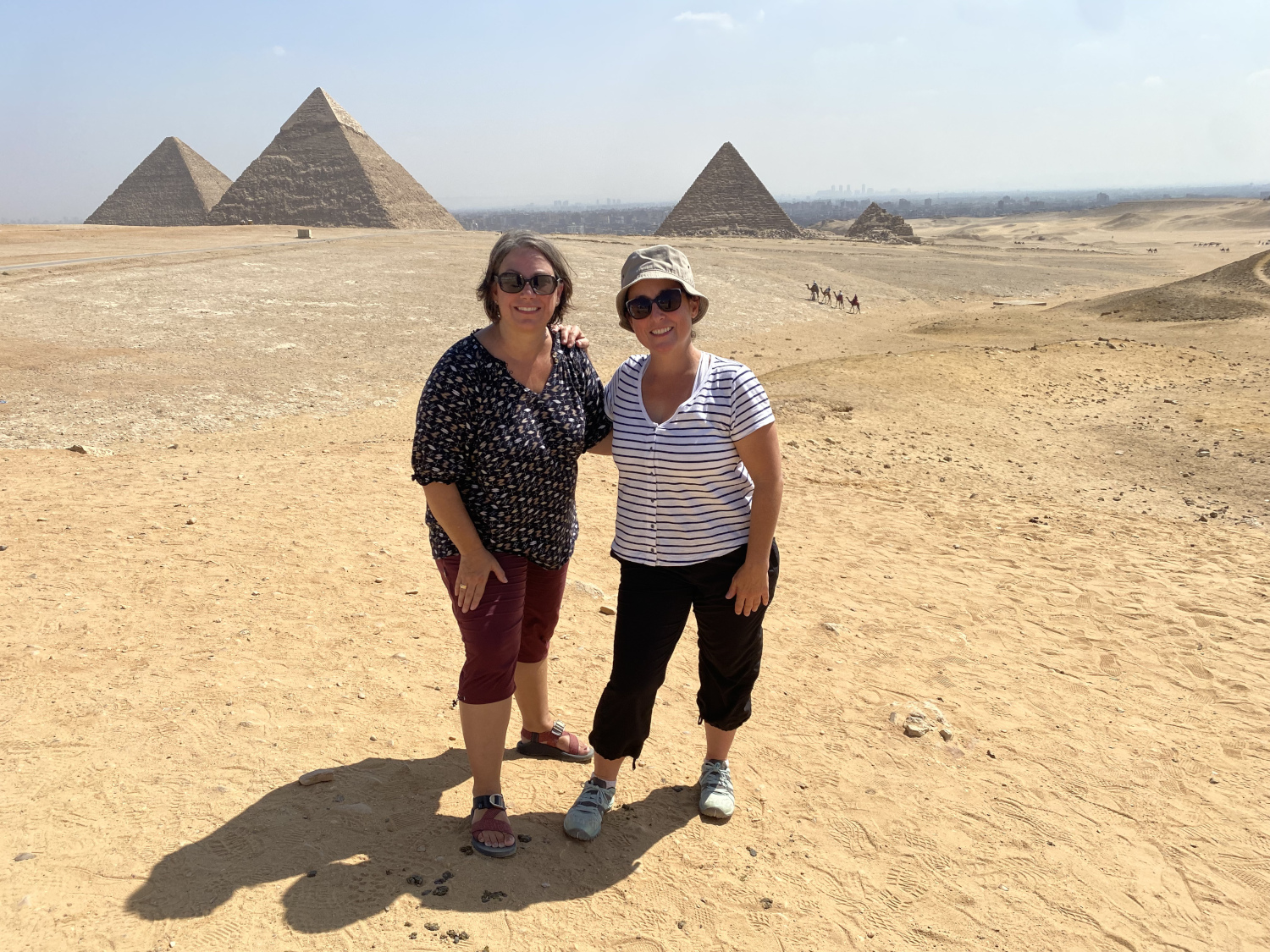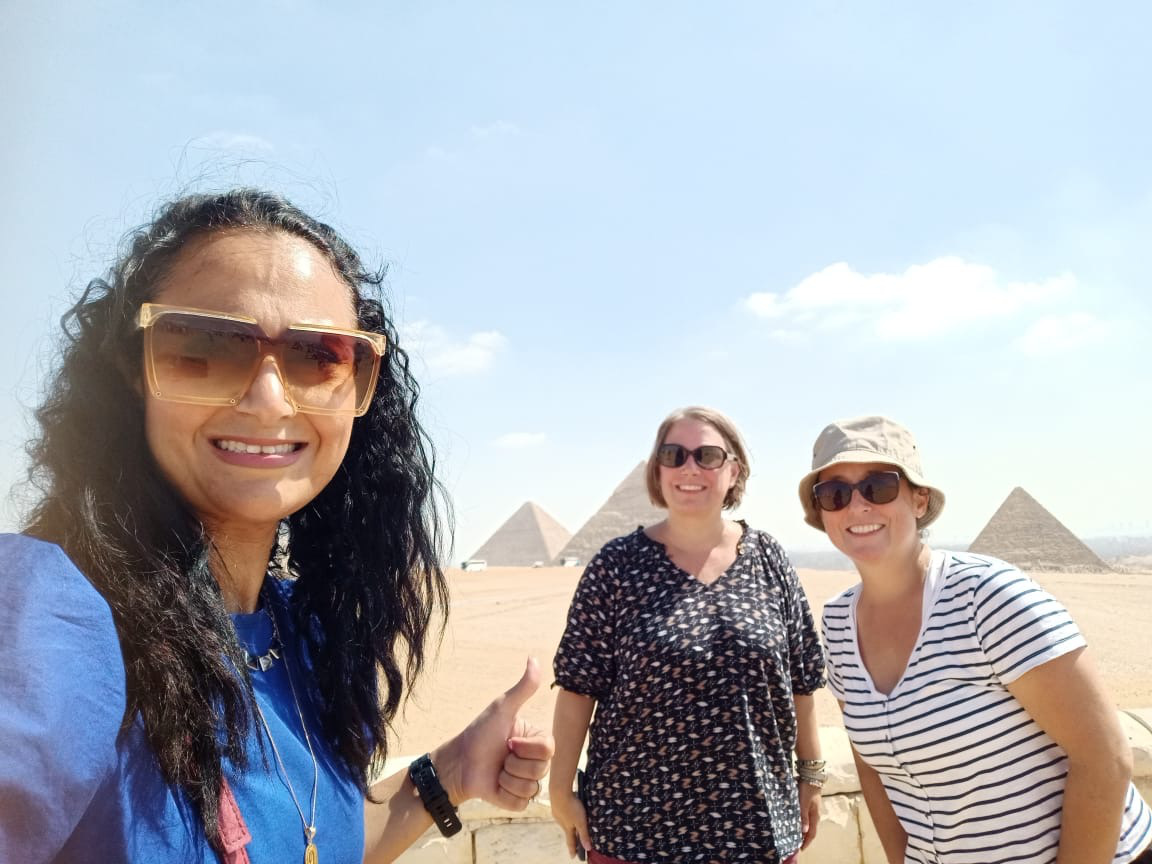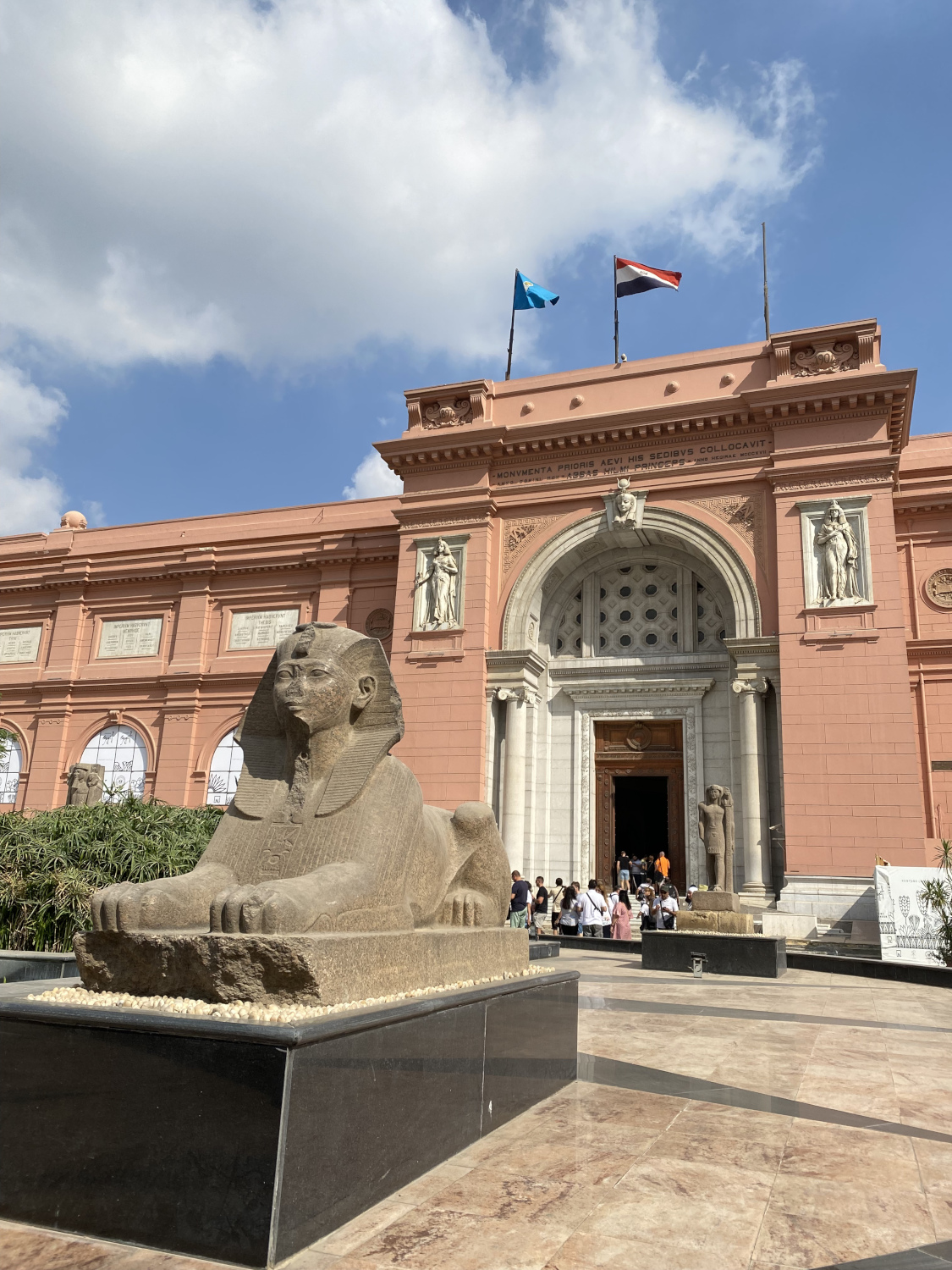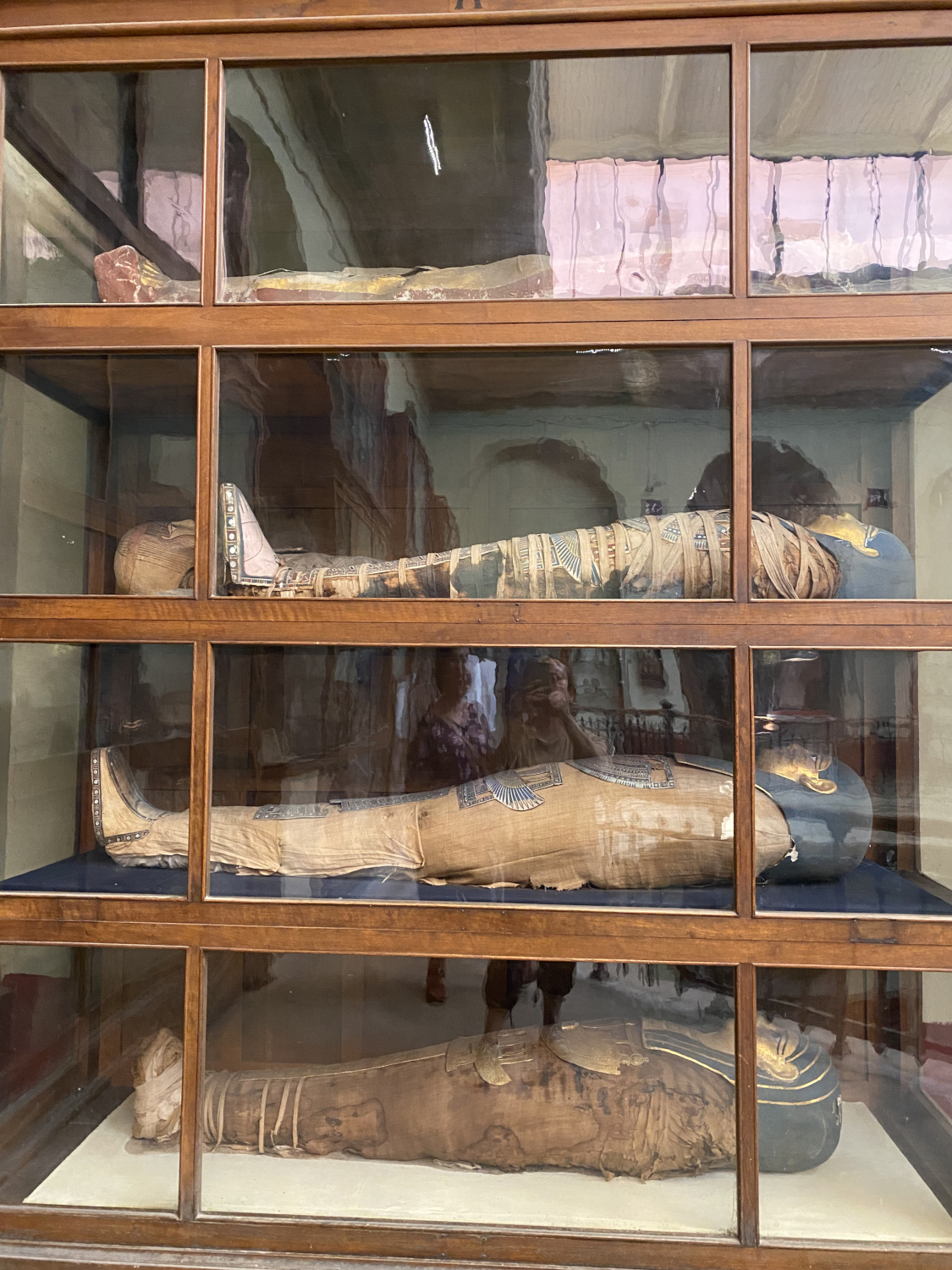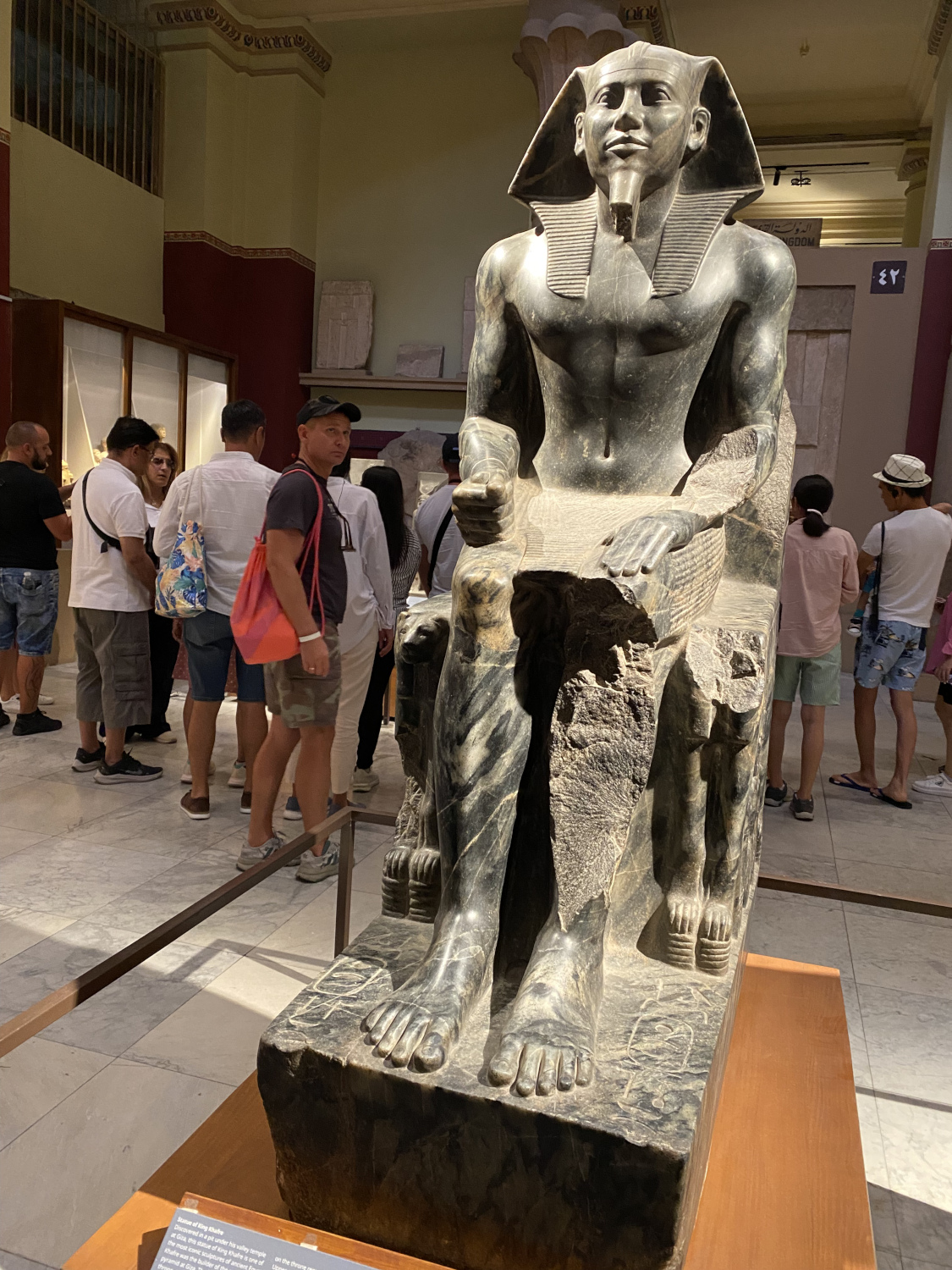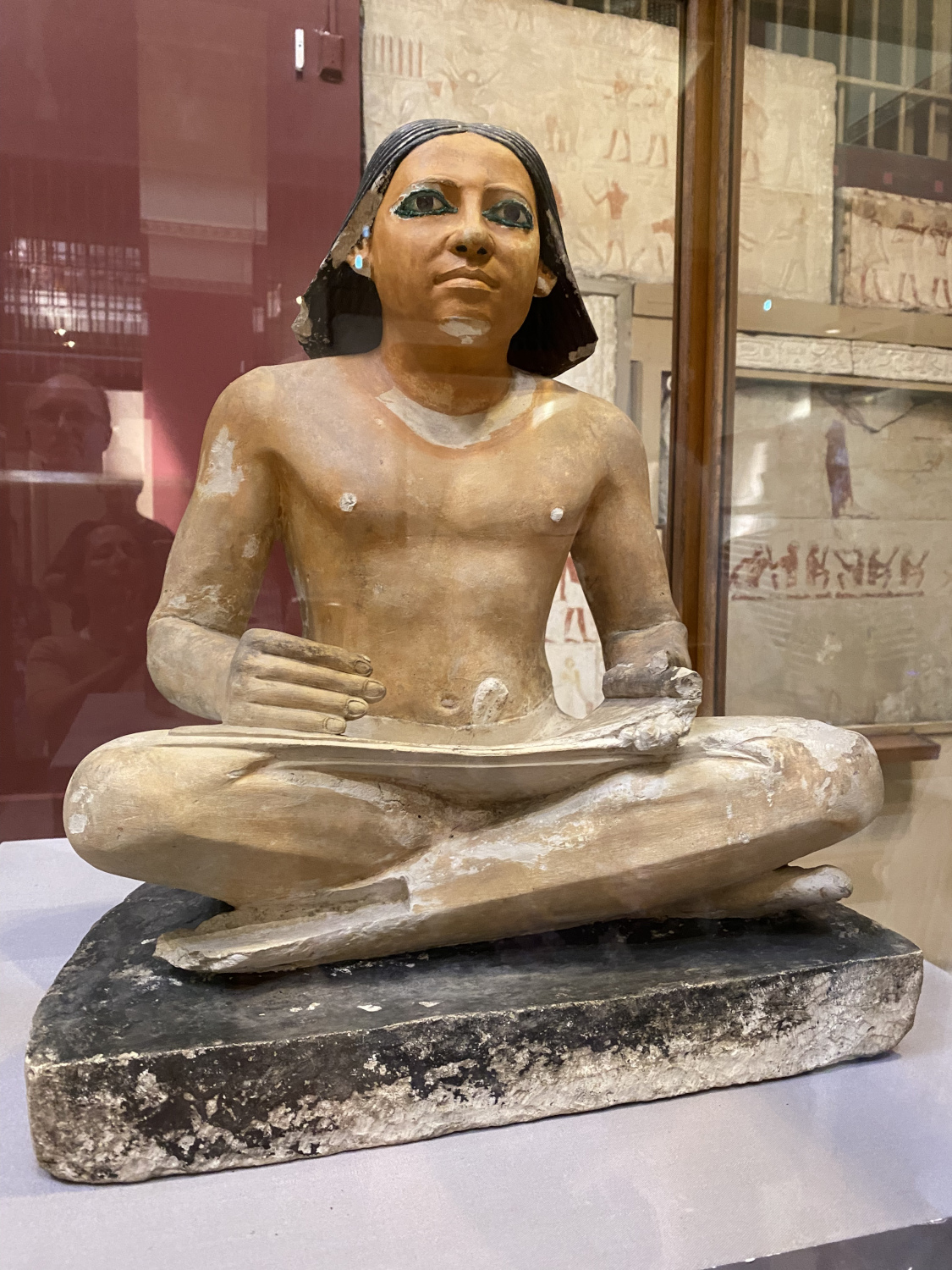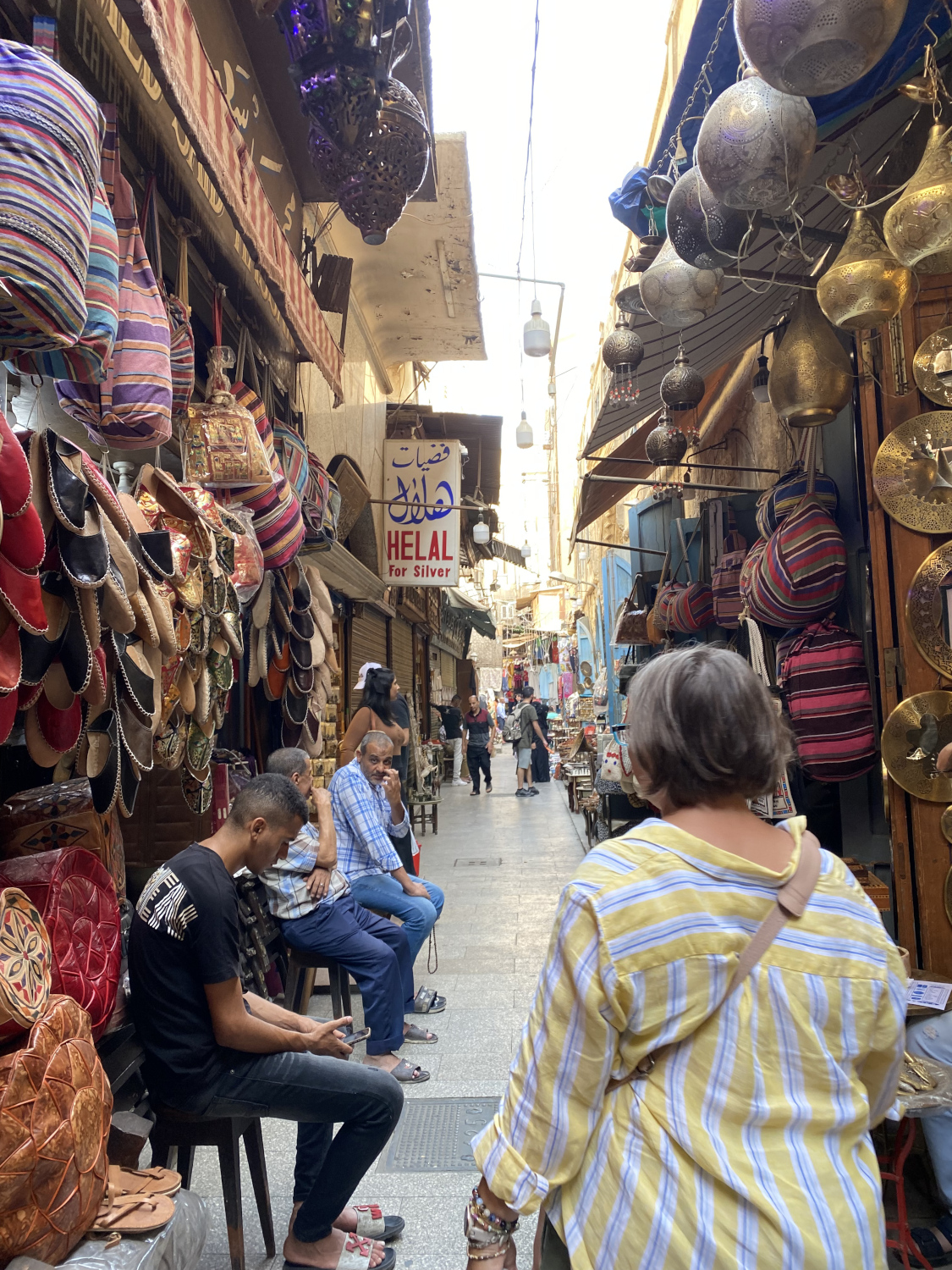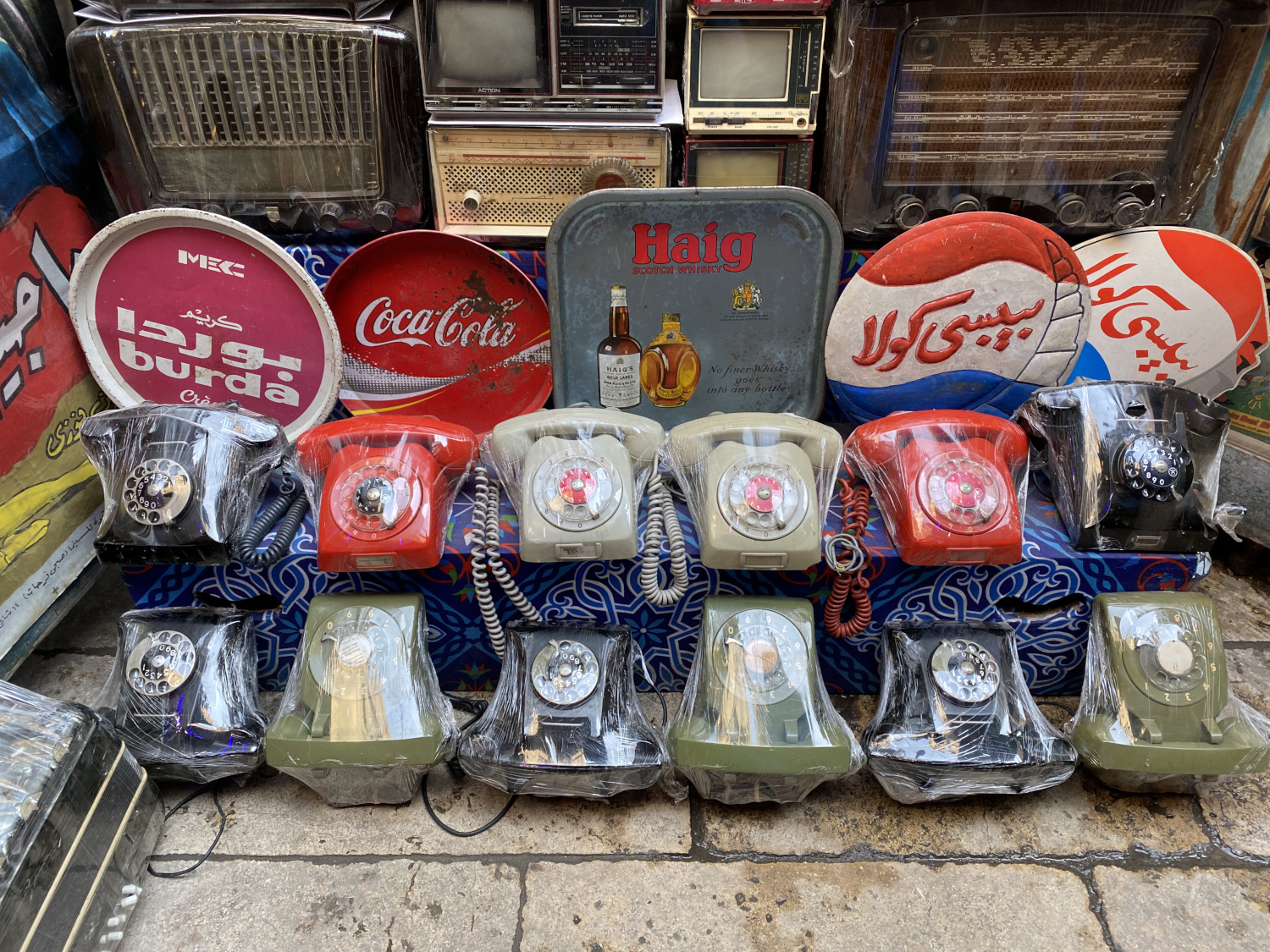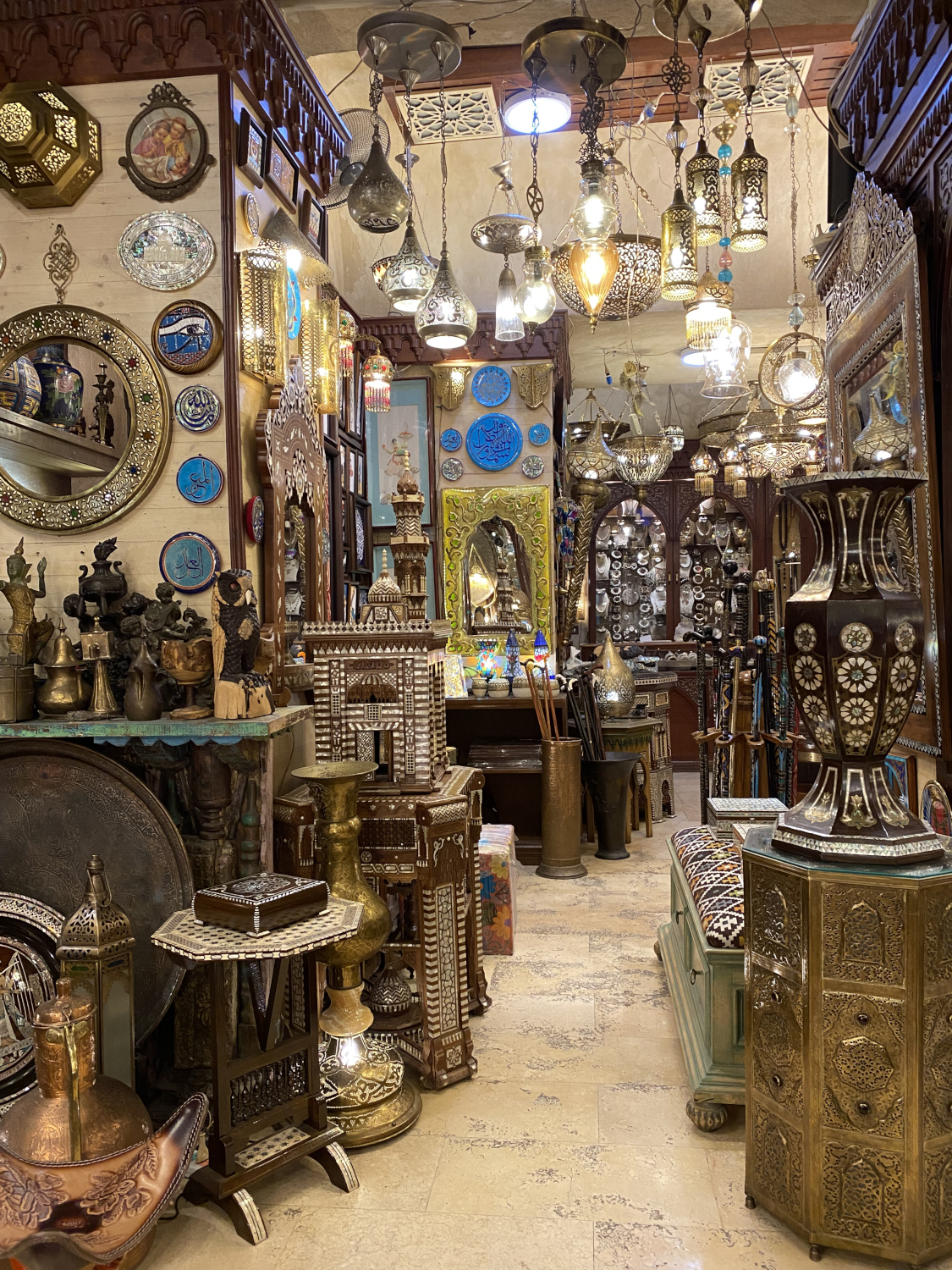One doesn’t come all the best way to Egypt to dive within the Crimson Sea and bypass the nation’s breathtaking cultural points of interest—no less than this one doesn’t. And so it’s that, after a implausible week on board the M/V Grand Sea Explorer, I’m assembly my pal Julie in Hurghada for a tour of Egypt’s land-based websites.
Organized for dive visitors by means of the Grand Sea Explorer, our journey is an elective add-on earlier than or after any liveaboard tour. These bespoke experiences are arrange as visitors want—a couple of days in Cairo or Luxor, a go to to Aswan or Abu Simbel—and we’ve opted for a week-long itinerary that encompasses the best hits. We’ll begin in Hurghada with a non-public driver, who will transport us to Luxor, the place we’ll spend two days. From there it’s additional south to Aswan and Abu Simbel, and at last a flight to Cairo for 2 days earlier than heading dwelling. The sheer scope of the historical past we’re about to see may—and has—crammed libraries filled with books, so let it’s mentioned that this quick story can not presumably summarize what we noticed on our go to. I’ll focus as an alternative on highlights and go away it to you, pricey readers, to dig deeper into the historical past of any specific matter that strikes your fancy.
Luxor
“Habibi means sweetheart, in order that’s our name signal,” says our information, Nermeen Melad. “In a crowded place, I say habibi, you reply the identical.” We meet Nermeen upon arrival in Luxor, which rises like an oasis out of the brown land, hugging the east financial institution of the Nile. This exceptional river is distinct not just for being the world’s longest, but additionally for flowing from south to north. So, confusingly (no less than for us), we’re beginning our tour in Higher Egypt, that means the southern portion of the nation.
Nermeen, a Luxor native, picks us up at our lodge, the Steigenberger Nile Palace, after lunch and a swim on the Nile-front lodge’s pool. Our first cease is the magnificent Karnak Temple, which might get crowded—therefore her habibi name and response. Seems we don’t want it although; the crowds are fairly mild on this sweltering September day.
All through the journey, I discover myself in an nearly perpetual state of awe on the sheer age—and measurement—of all the things we see, beginning with Karnak. Encompassing about 200 acres, the large temple advanced was constructed to honor the solar god, Amun, his spouse Mut, and their solar Khonsu, with every successive pharaoh placing his stamp on it. Reigning from ca. 1291 to 1279 BC, the pharaoh Sety I’s contribution stands out—the Nice Hypostyle Corridor, an unlimited forest of 134 gigantic sandstone columns, initially constructed to help a heavy roof. Atop every column sits a lotus; the closed flowers meant to help the burden of the roof, and the open ones meant purely for adornment. And although immediately many of the colour has washed away, we are able to nonetheless see glimpses of the jewel-like tones that after adorned these columns.
Our second cease of the day is the Luxor Temple, related to the Karnak advanced by way of the traditional Avenue of Sphinxes, lined—because the identify implies— with sphinxes. At present, it’s been excavated, and guests can stroll the size of the street, roughly 1.7 miles or 3 km, although we decide to drive within the warmth.
Luxor Temple, although smaller than Karnak, is not any much less spectacular. Constructed round 1400 BC by Amenhotep III (1390–1352 BC) and accomplished by Tutankhamun (1336–1327 BC), it’s Ramses II, (1303–1213 BC), who added onto the temple, that exerts the strongest visible affect right here. Flanking the doorway are two gigantic statues of the pharaoh, 46 toes tall. Already bigger than life in his personal time, this influential king was the daddy to properly over 100 kids, and he’ll pop up once more all over through the week.
With our first day spent within the temples, the second day is reserved for the tombs. As a result of the solar units within the west, the western financial institution of the Nile symbolized the top of life for historical Egyptians, so it’s right here that you just’ll discover each the Valley of the Kings and the Valley of the Queens. Nermeen begins our day on the Valley of the Queens, visiting the 2 monumental websites within the reverse order from most excursions in order that we don’t should cope with crowds. Her ploy works, and as we trek into the valley from the parking zone, we see two or three different folks at most.
There are greater than 90 recognized tombs right here, all constructed from 1292–1075 BC. Tombs open and shut on a rotational foundation for preservation’s sake, and our first cease is the tomb of Nefertari, the primary and most beloved spouse of Ramses II. Solely reopened in 1995 after a few years of restoration, the tomb requires an additional ticket, but it surely’s properly price it. Constructed round 1250 BC and lined from floor-to-ceiling in beautiful hieroglyphs that look as if they had been painted yesterday, this breathtaking underground house gives an astonishing degree of artisanship.
After the Queens, we’re off to go to the Kings, who occupy a much more spectacular valley (who’s shocked?). There are 63 recognized tombs right here, constructed between 1539–1075 BC, additionally open on a rotational foundation. We’ve acquired to take a tram as much as the tombs, the place our ticket contains visits to 3 of them—we’ve chosen these of Ramses I, Ramses III, and Merenptah, Ramses II’s 13th son and successor—every of which consists of an extended, sloping hall descending downward and carved by means of strong limestone, terminating within the burial chamber itself. Higher chambers alongside the best way would have held objects the king would wish within the afterlife, together with such modern-day necessities as beer and wine. It’s laborious to explain the scope of every tomb, every lengthy hallway lined in elaborate, coloured hieroglyphs, every ending in an unlimited sarcophagus that will have held the Pharoah’s mummy.
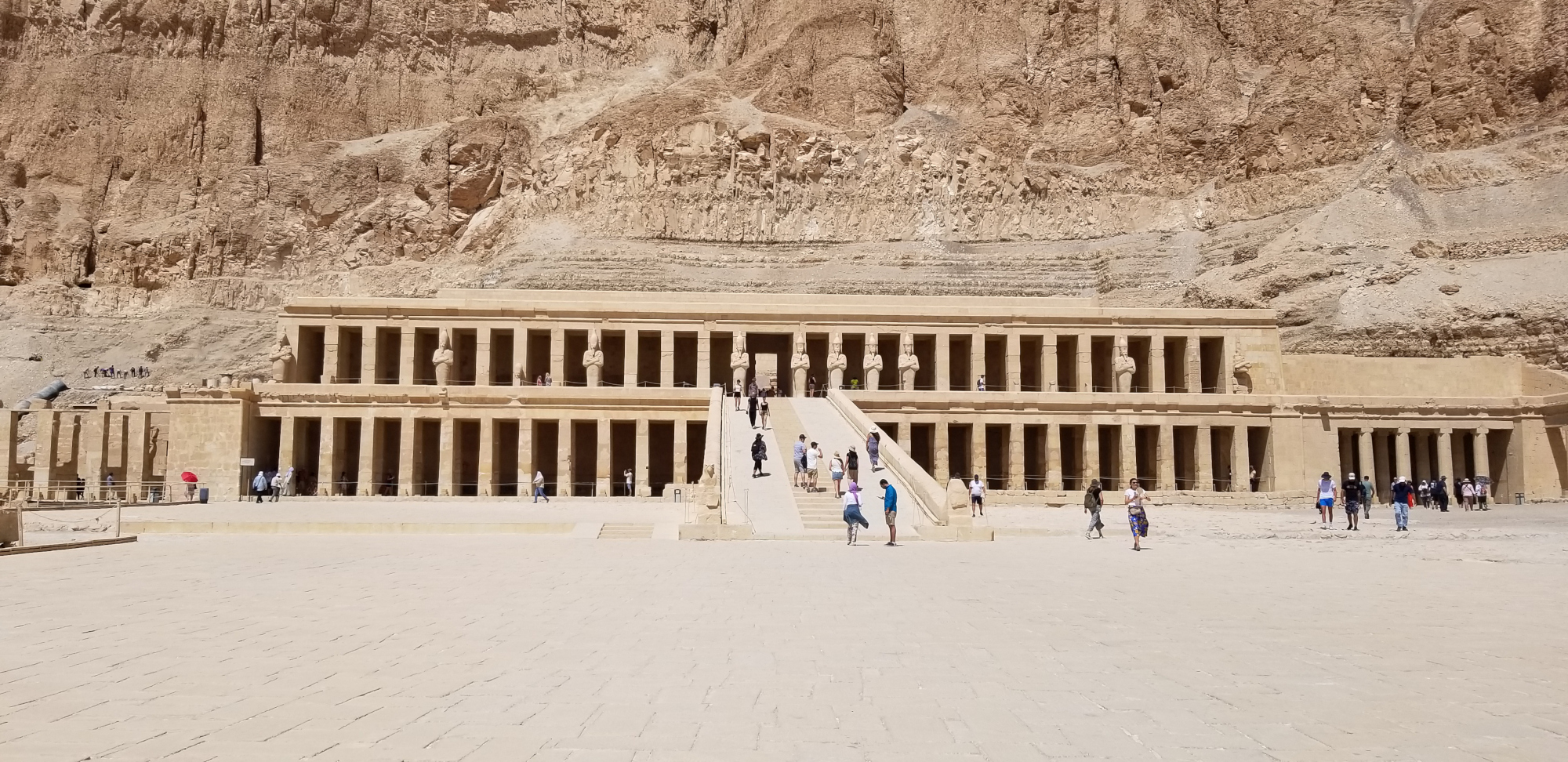
The remainder of our second day is spent touring the spectacular mortuary temple of Hatshepsut, one of some feminine Pharaohs. Carved into sheer cliffs, it’s three terraces are like nothing else we’ve seen—or will see—wherever else on the journey. After two (very) full days in Luxor, the subsequent morning brings an early departure to our subsequent cease: Aswan.
Edfu and Kom Ombo
Our journey turns into considerably of a whirlwind at this level, which I suppose is to be anticipated whenever you strive to soak up 5,000 years of historical past in per week. Although there’s a bypass street from Luxor to Aswan within the far south, we take the scenic route, hugging the Nile Valley all the best way. Each Julie and I regularly marvel on the scope of a civilization that was confined to this tiny strip of fertile land on both aspect of an unlimited desert.
On the best way, we cease at two extra temples. Edfu Temple, devoted to Horus, the falcon-headed god and son of Isis and Osiris, was constructed from 237–57 BC, comparatively new by comparability to the tombs and temples we’ve simply seen. It fell into disrepair and spent many centuries lined by sand till rediscovery in 1813 by French Egyptologist Auguste Mariette.
Our subsequent cease is Kom Ombo, which suggests “Hill of Gold,” constructed from 205–180 BC. This temple is exclusive attributable to its double design, with two units of courts, halls, sanctuaries, and rooms, every meant for worship of a distinct god—the crocodile deity Sobek and Horus, as soon as once more. And, talking of crocodiles, we cease into an absolute can’t miss right here—the Crocodile Museum, stuffed with the mummified our bodies of twenty-two huge Nile crocodiles. As a result of they represented a bodily manifestation of Sobek, reside crocodiles had been typically worshiped and cared for by monks and, after they died, their our bodies could be mummified.
Aswan
“They’ll take you to a backyard; that’s sufficient temples for immediately,” says Nermeen upon arrival in Aswan. We’re assembly our subsequent information, Galal Kayed, on the Mövenpick Aswan on Elephantine Island, our luxurious lodge for (sadly) simply the one evening. After stashing our luggage in our Nile-view room, we hop on board a felucca for what proves to be one of many journey’s most enjoyable afternoons. Our first cease is the Aswan Botanical Backyard, which occupies Kitchener’s Island to the west of Elephantine. Each islands float in the midst of the river, with larger Aswan to the east. Simply as in Luxor, the town is constructed on the east financial institution of the Nile, because the western aspect was reserved for the lifeless.
After a sluggish stroll by means of the 16-acre backyard, that includes crops from all over the world, we board the felucca as soon as once more for a several-hour cruise on the Nile. It’s simply us, Galal, a ship captain, and his assistant on the boat and, because the solar begins to set whereas we sip our tea and drift with the wind, Galal, who’s been a information since 2007, tells us a bit about Aswan.
Most well-known as the situation of the Aswan Excessive Dam, development of which created the large reservoir Lake Nasser, the town itself is dwelling to a number of can’t-miss websites, together with the Unfinished Obelisk—considered one of Hatshepsut’s—and the Philae Temple advanced, initially on Philae Island, however dismantled piece by piece and moved to close by Agilkia Island to protect it from being flooded when the dam was accomplished in 1970. Sadly, we do miss them each—and all the things else in Aswan, apart from a really fast go to to the Dam—due to journey snafus the subsequent day. We do, nonetheless, make it to Abu Simbel, which I’m grateful that Julie was intent on together with in our itinerary.
Abu Simbel
Building of the Aswan Excessive Dam within the Nineteen Sixties and 70s threatened fairly a couple of historical Egyptian monuments with submersion, together with the astonishing pair of temples at Abu Simbel, in-built 1244 BC. To succeed in this remoted website, we’ve acquired to be on the Aswan airport early—like 5 am early. We’re to fly to Abu Simbel, 174 miles (280 km) south, go to the temples for a number of hours, return the identical day, tour Aswan, after which fly to Cairo that very same evening. However, as is widespread in journey, the day doesn’t go in keeping with plan, and our flight to Abu Simbel is so severely delayed that we miss our total day in Aswan. Nonetheless, we’re each gob smacked by the temples after we do arrive, albeit a number of hours late.
Simply as at Philae, the temples at Abu Simbel weren’t initially positioned right here, on the shore of Lake Nasser, however relatively in a valley that was flooded when the Excessive Dam was accomplished. These temples—the bigger of the 2 devoted to Ramses II and the smaller to his queen Nefertari—had been relocated beginning in 1964, piece by piece, over 200 toes (65 m) increased up and 650 toes (200 m) additional inland. And since the temples had been initially carved straight right into a cliff, and never constructed of items of stone, the rock above the temple roofs needed to be peeled off to achieve entry. Then, every temple was fastidiously sawed into huge blocks, every weighing between 20 and 30 tons—over 1,000 of them. Every numbered piece was meticulously put again into place, at precisely the identical alignment to the solar as the unique in order that its rays would nonetheless illuminate the inside statues as earlier than.
At present, a go to to Abu Simbel is nearly as a lot in regards to the sheer magnificence of the engineering feat that acquired it right here as in regards to the magnificence of the temples—nearly. Ramses’ huge temple is flanked by 4 colossal depictions of himself, every measuring 65 toes (20 m) excessive. Inside are extra towering statues of the Pharoah and partitions lined in intricate hieroglyphs, depicting his wonderful army victories. The smaller temple on the positioning options 4 statues of Ramses and two of Nefertari, nonetheless huge at round 30 toes tall (10 m). Less complicated than the principle temple, this one nonetheless holds spectacular depictions of the queen’s coronation by two historical goddesses, in addition to ubiquitous hieroglyphs and carved scenes. After taking our time, and plenty of photos, we head again to the airport and, after a fast journey to the highest of the Aswan Excessive Dam, we’re on the best way to Cairo for the ultimate leg of our journey.
Cairo
“If you wish to drive in Cairo, you want three issues—a great horn, good brakes…and good luck.” Our information for the subsequent two days, Ereny George isn’t unsuitable. She and our driver meet us the subsequent morning at our downtown lodge, the Ramses Hilton for our go to to the journey’s primary occasion: the Pyramids of Giza. After the relative quiet of Luxor and Aswan, the cacophony of Cairo, a pulsing metropolis of 21.7 million folks, is astonishing to the senses—automotive horns beep 24/7; there appear to be no precise lanes of site visitors; and there are folks in all places, on a regular basis.
Right here, simply as in different Egyptian cities, the lifeless had been buried on the western financial institution, in order that’s the place we’re headed. Giza immediately is a gigantic metropolis in its personal proper, contributing simply over 8 million folks to Cairo’s whole inhabitants. However, even surrounded by a lot modernity, the primary glimpse of the pyramids from the automotive is actually breathtaking. It’s a wierd feeling to see one thing in individual, lastly, that you just’ve seen depicted so many occasions in artwork, motion pictures, books, and standard tradition. We’re right here comparatively early within the morning and within the shoulder season, so it’s not overly crowded after we disembark the automotive, already snapping photos earlier than we’re even by means of the doorway gate. There are three well-known pyramids on the Giza Plateau—The Nice Pyramid of Giza, also referred to as the Khufu Pyramid or Cheops Pyramid for the king previously buried inside; the pyramid of Khafre; and the pyramid of Menkaure, additionally named for the kings they entombed. Although these three are by far essentially the most well-known, Ereny tells us there are over 130 pyramids in Egypt, with 9 on the Giza Plateau plus the stays of 10 extra.
“Have you learnt what number of blocks are within the Nice Pyramid? I’ll offer you time to rely,” says Ereny as we method the doorway. The reply, she rapidly shares, is 2.3 million, and the towering construction took just a little over 20 years to construct.
The Nice Pyramid initially stood 481 toes (146 m) tall and was lined in clean, white limestone over the now jagged-looking bricks. Because it eroded, the pyramid’s top fell to a nonetheless astounding 454 toes (138 m), particularly when one considers that this was all completed by hand. Much more mind-boggling are the pyramid’s ages—constructed within the 26th and 25th centuries BC (roughly 2,600 BC–2,400 BC), these constructions predate the primary development at Karnak Temple in Luxor, which was begun round 1971 BC, by over 600 years.
Although guests have lengthy been disallowed from climbing the skin of the pyramids, they will go inside all three; and we’ve opted for the Nice Pyramid. Entrance is thru a gap on the pyramid’s north face and, after a brief stroll by means of a tunnel, we’ve acquired to stroll up a steeply slanted, extraordinarily scorching, extraordinarily claustrophobic ramp by means of the Grand Gallery, lower than 7 toes large, over 150 toes lengthy, and round 30 toes excessive. The lengthy ramp leads—barely anti-climatically—to the King’s Chamber, holding solely an empty granite sarcophagus. That mentioned, simply figuring out we’re climbing inside the one one remaining of the Seven Wonders of the Historical World is thrill sufficient.
After our climb, it’s off to see the Nice Sphinx of Giza, whose nose-less visage is simply as well-known because the pyramids themselves. Carved round 2,500 BC of strong limestone with the top of a human and the physique of a lion, the Sphinx appears to symbolize the Pharoah Khafre. After the Giza burial website was deserted, the exceptional statue spent a few years buried as much as it shoulders in sand. The primary excavation try happened round 1,400 BC, however extremely the total statue wasn’t excavated completely till the Nineteen Thirties.
With visits to the Giza pyramids and the Sphinx behind us, we spend the subsequent day visiting the Egyptian Museum—a landmark in its personal proper—in downtown Cairo. In-built 1902, it now homes lots of the treasures present in King Tutankhamen’s tomb, innumerable mummies, papyrus, historical statues, sarcophagi, jewellery, and extra. Two hours there barely scratches the floor, and though lots of the museum’s items have already been moved to the as but unopened Grand Egyptian Museum (GEM) on the Giza Plateau, we don’t really feel their absence within the nonetheless jam-packed museum.
Our ultimate cease in Cairo is the Khan el-Khalili souk within the historic middle of the town, which has functioned as a middle of commerce for the town no less than because the 14th century. At present, it capabilities because the type of place that vacationers fortunately haggle with native shopkeepers for souvenirs of their journey.
Ereny drops us off on the entrance, and we spend a number of hours perusing the a whole bunch of stalls, promoting all the things from pyramid keychains to one-of-a-kind artisanal souvenirs.
Although neither Julie nor I go away with a keychain, we’re each happy with our purchases as we put together to go dwelling. Visiting Egypt has been such a exceptional cultural immersion and thrill for the senses, but we’ve solely scratched the slightest floor of this actually spectacular place. We each agree that one other go to could also be so as as soon as the GEM opens and, in any case, I do know I’ll be again—I ought to have purchased that pyramid keychain after I had the possibility.


